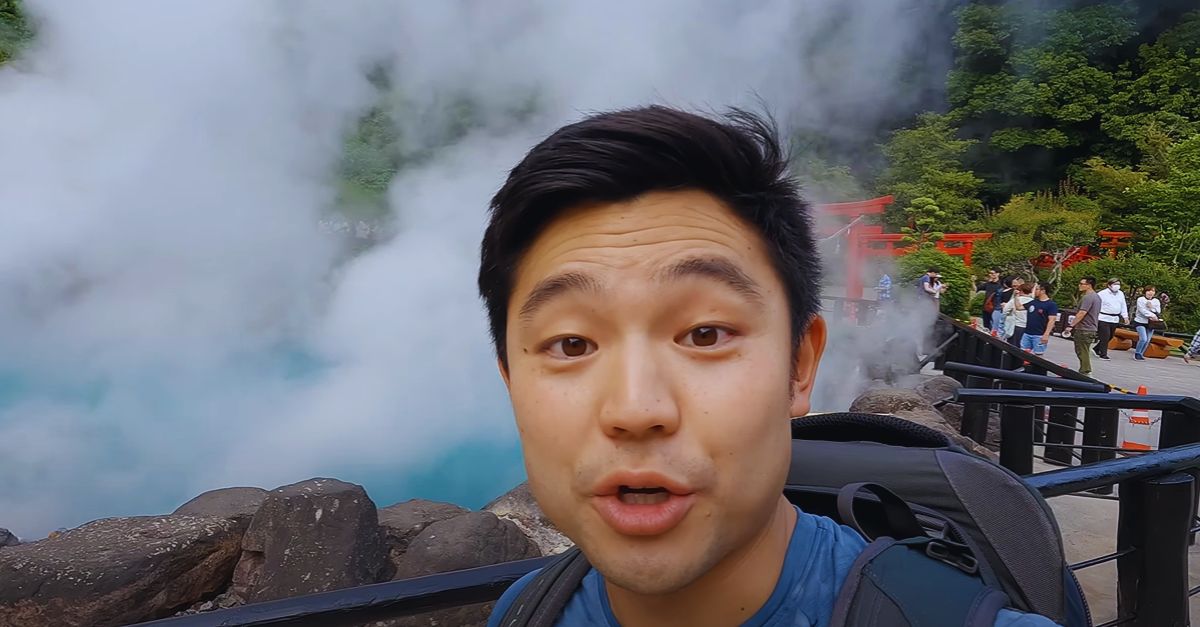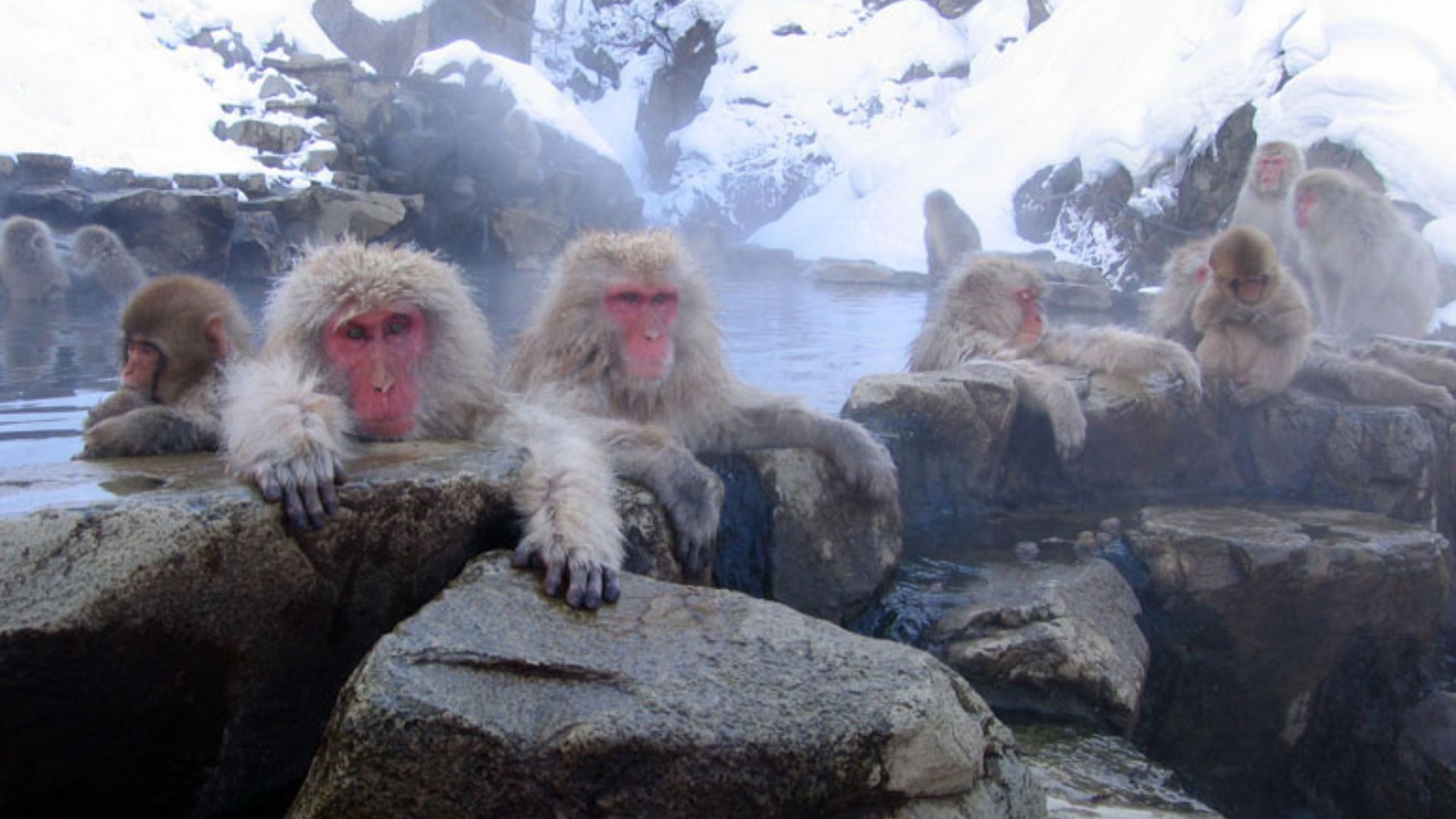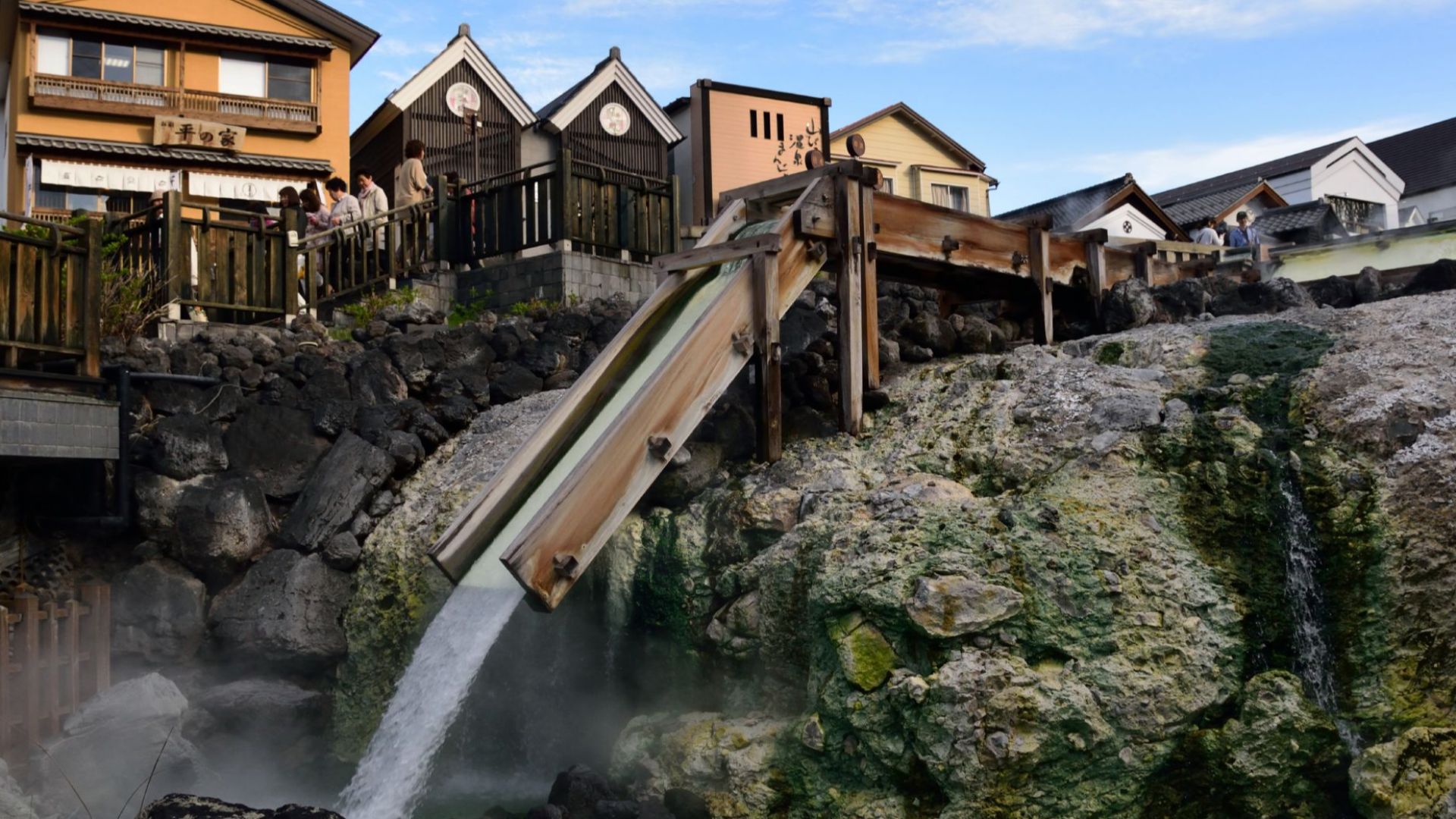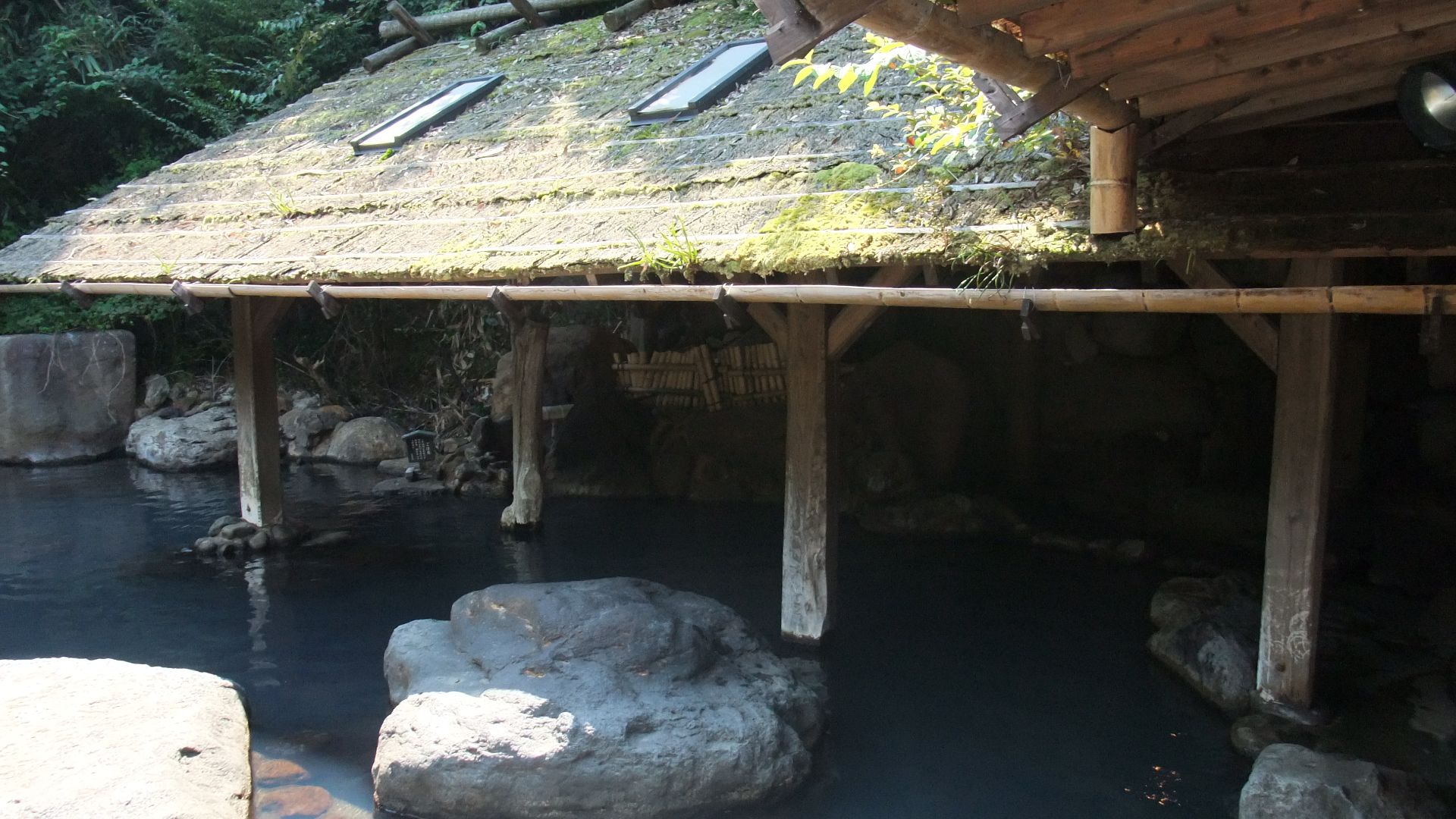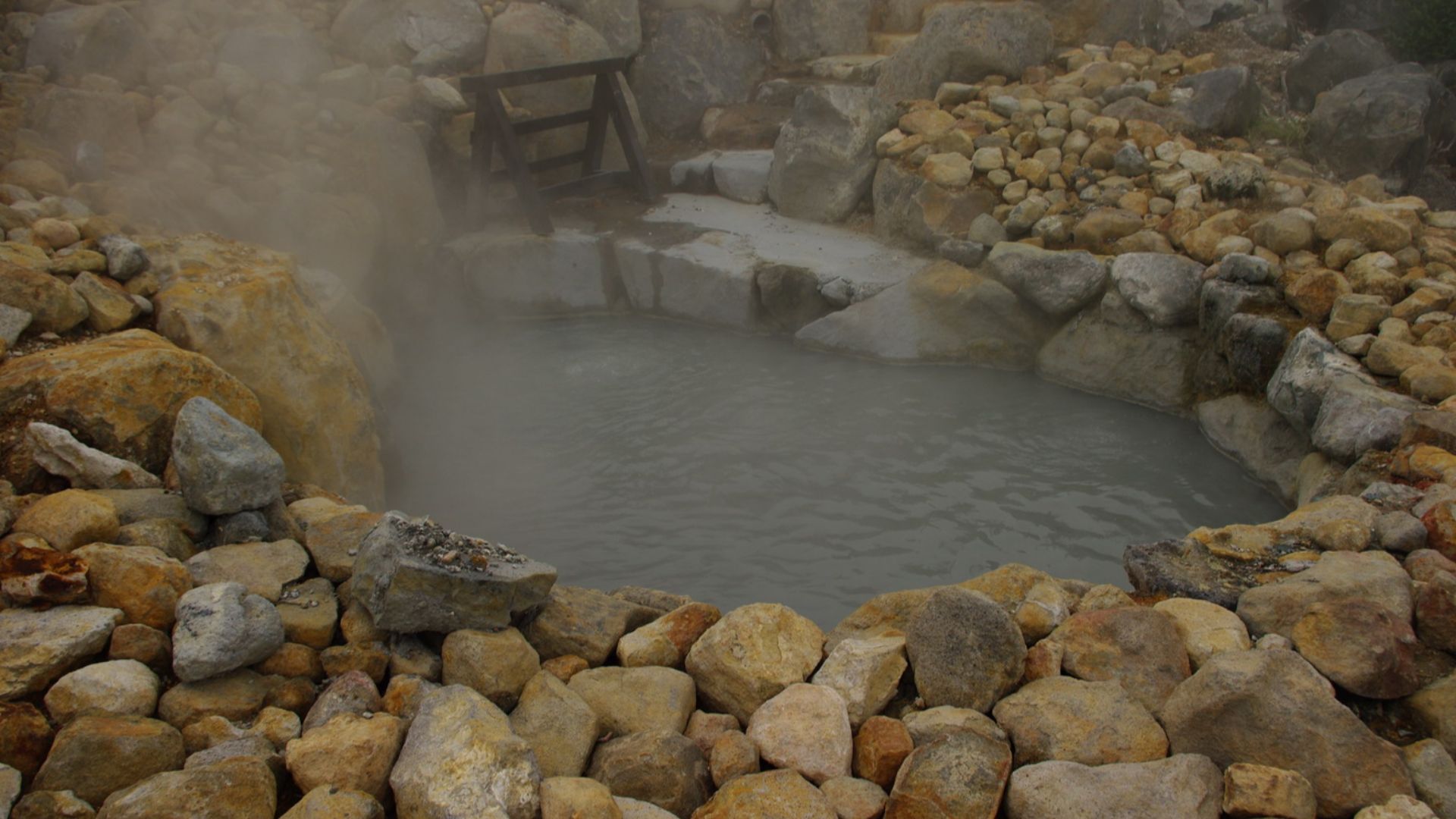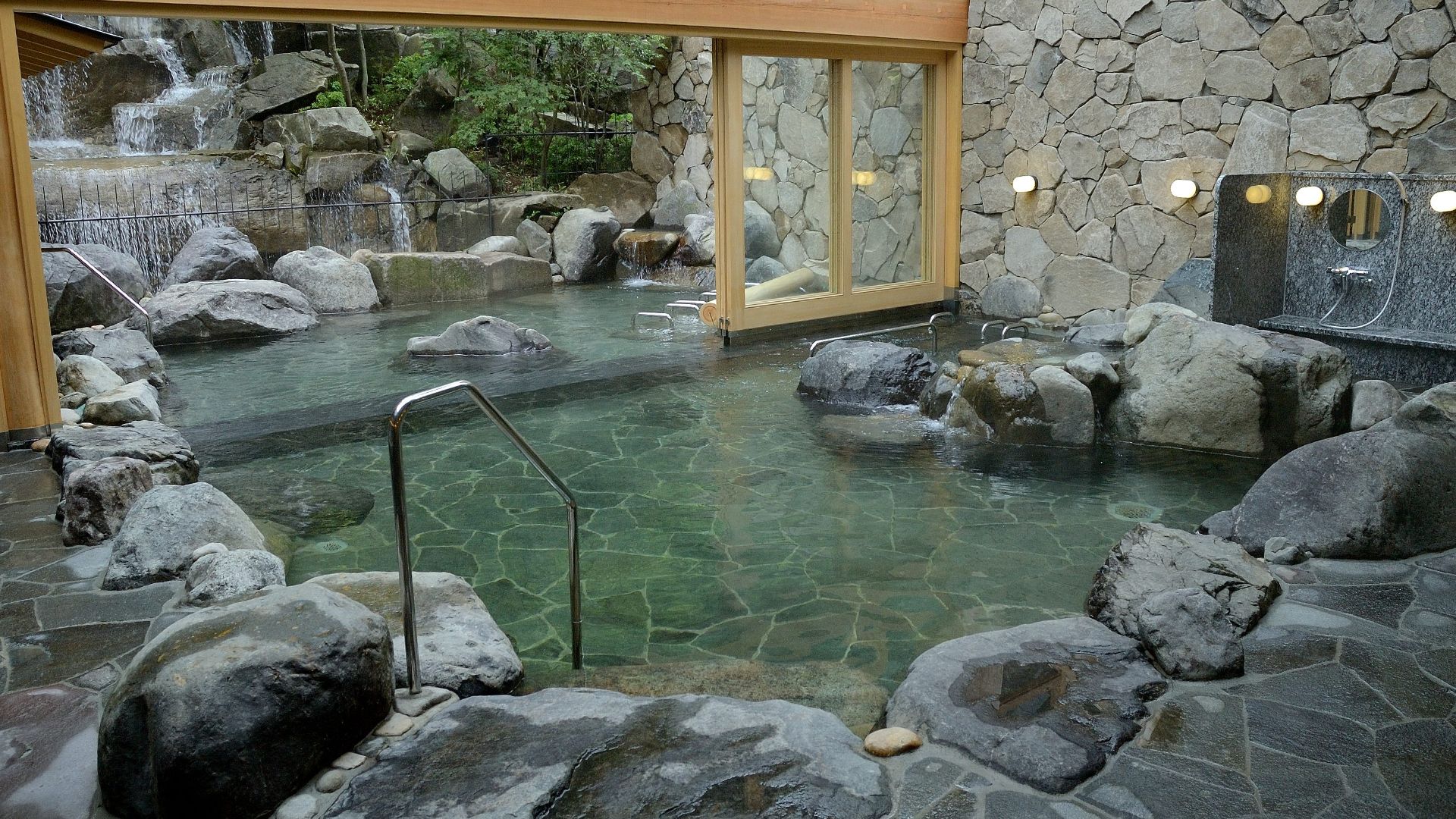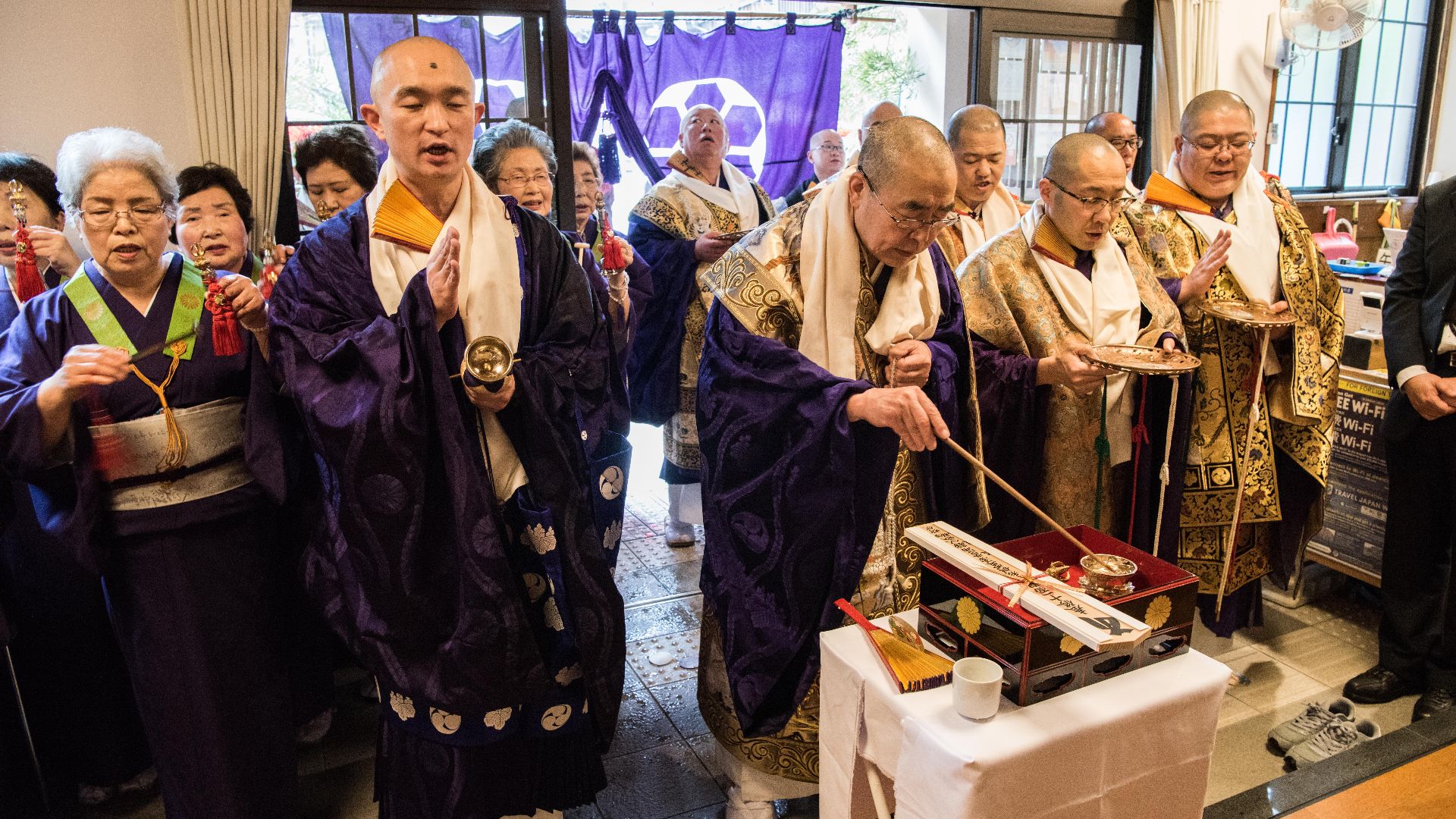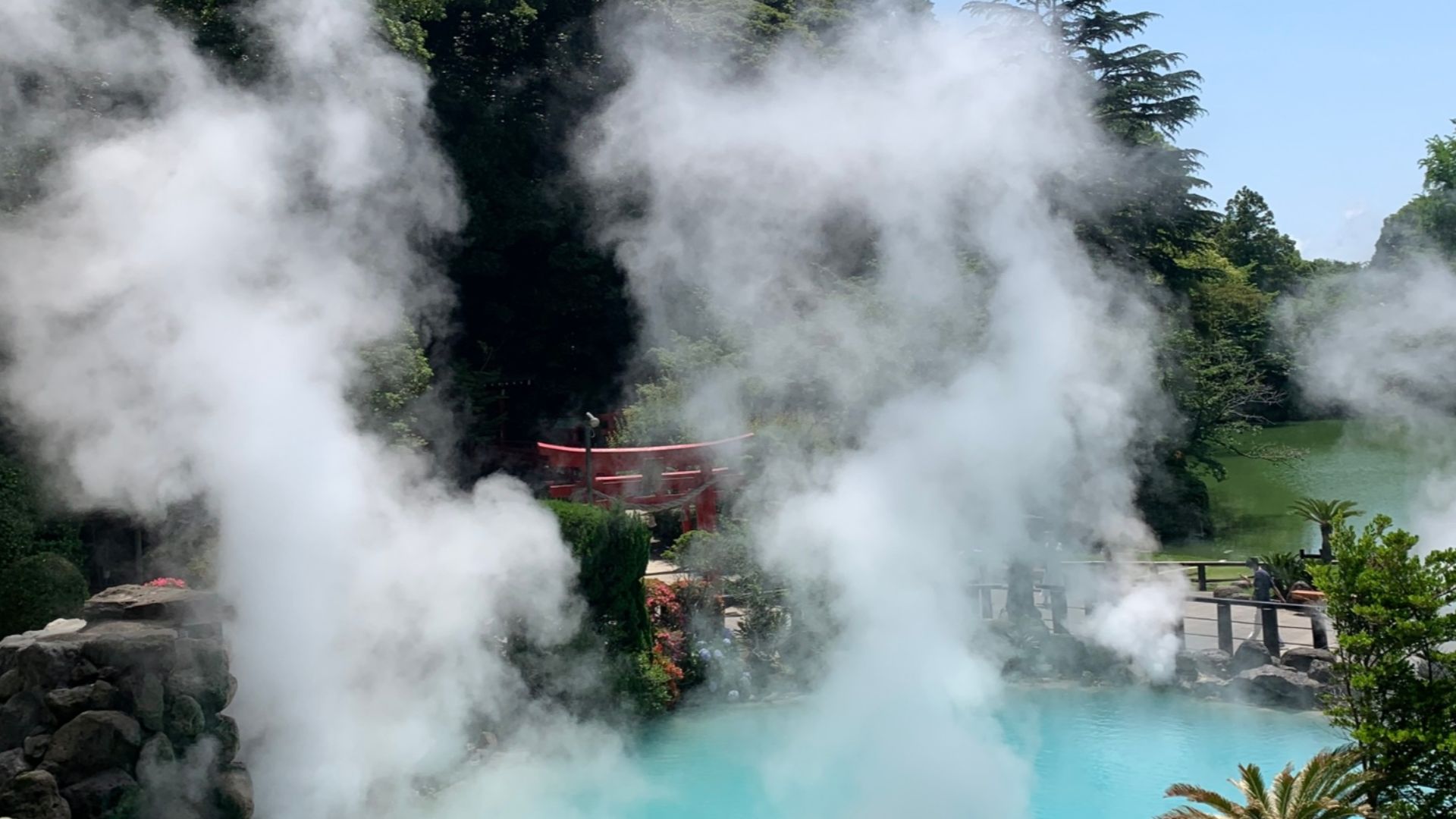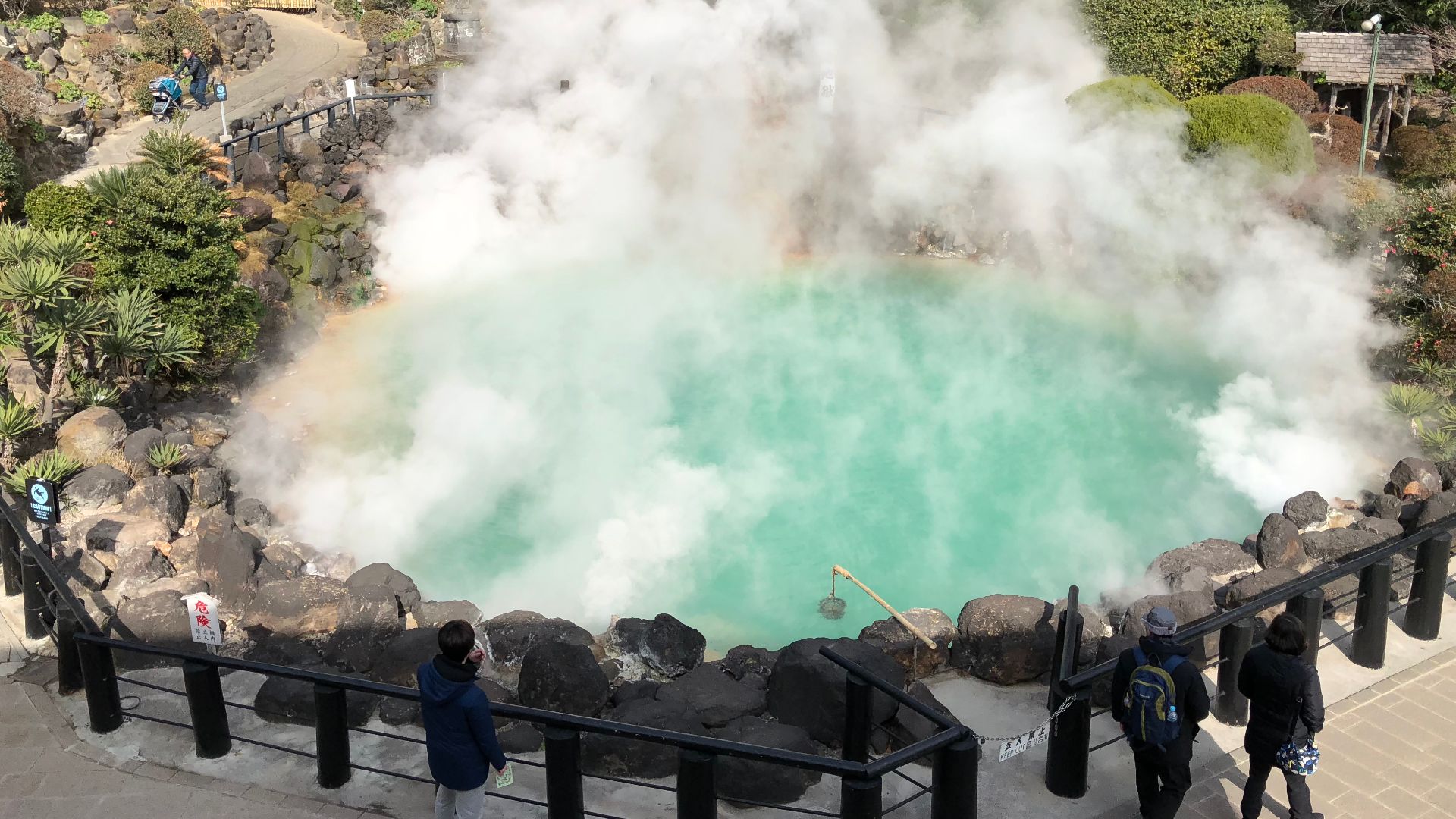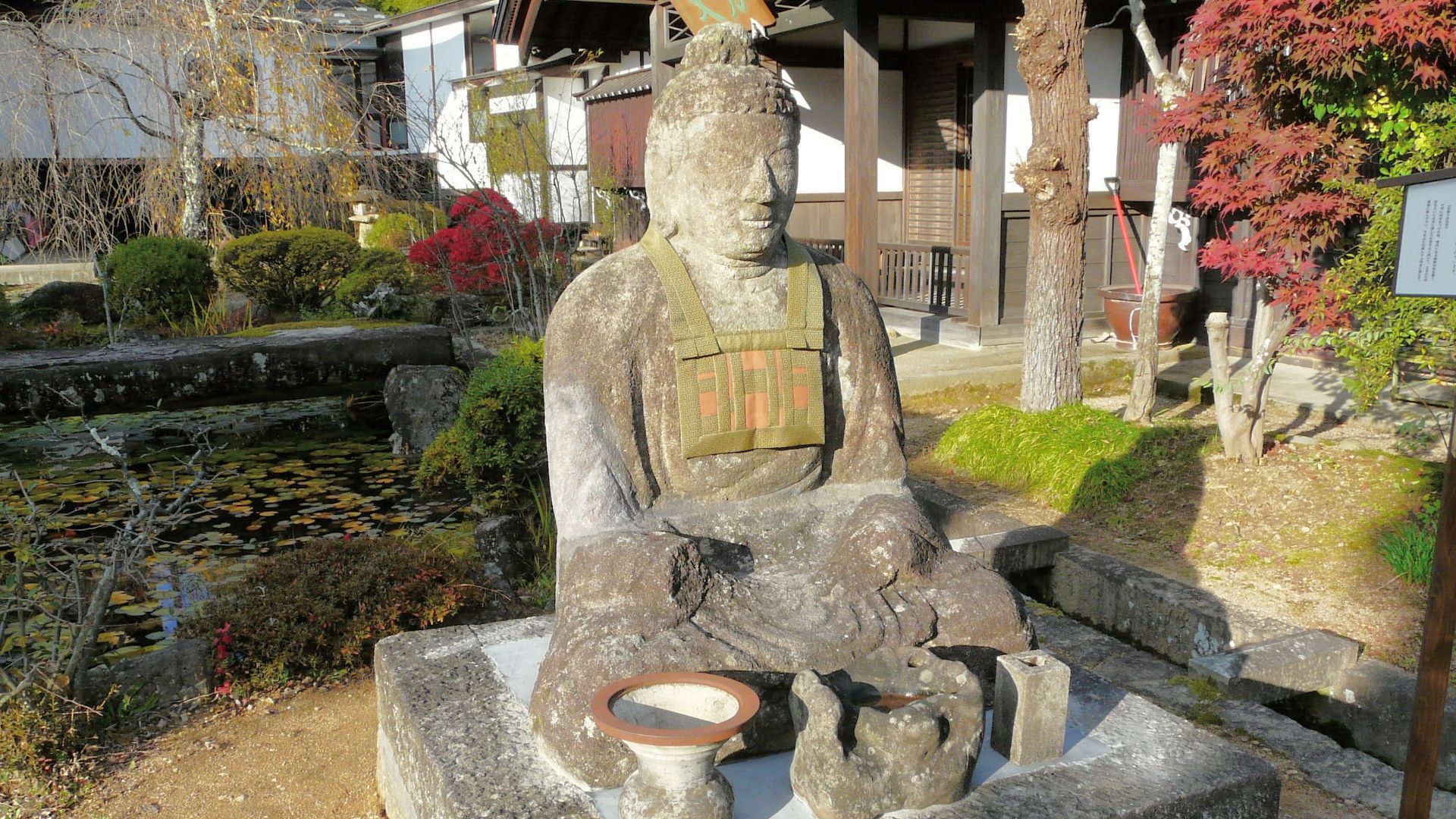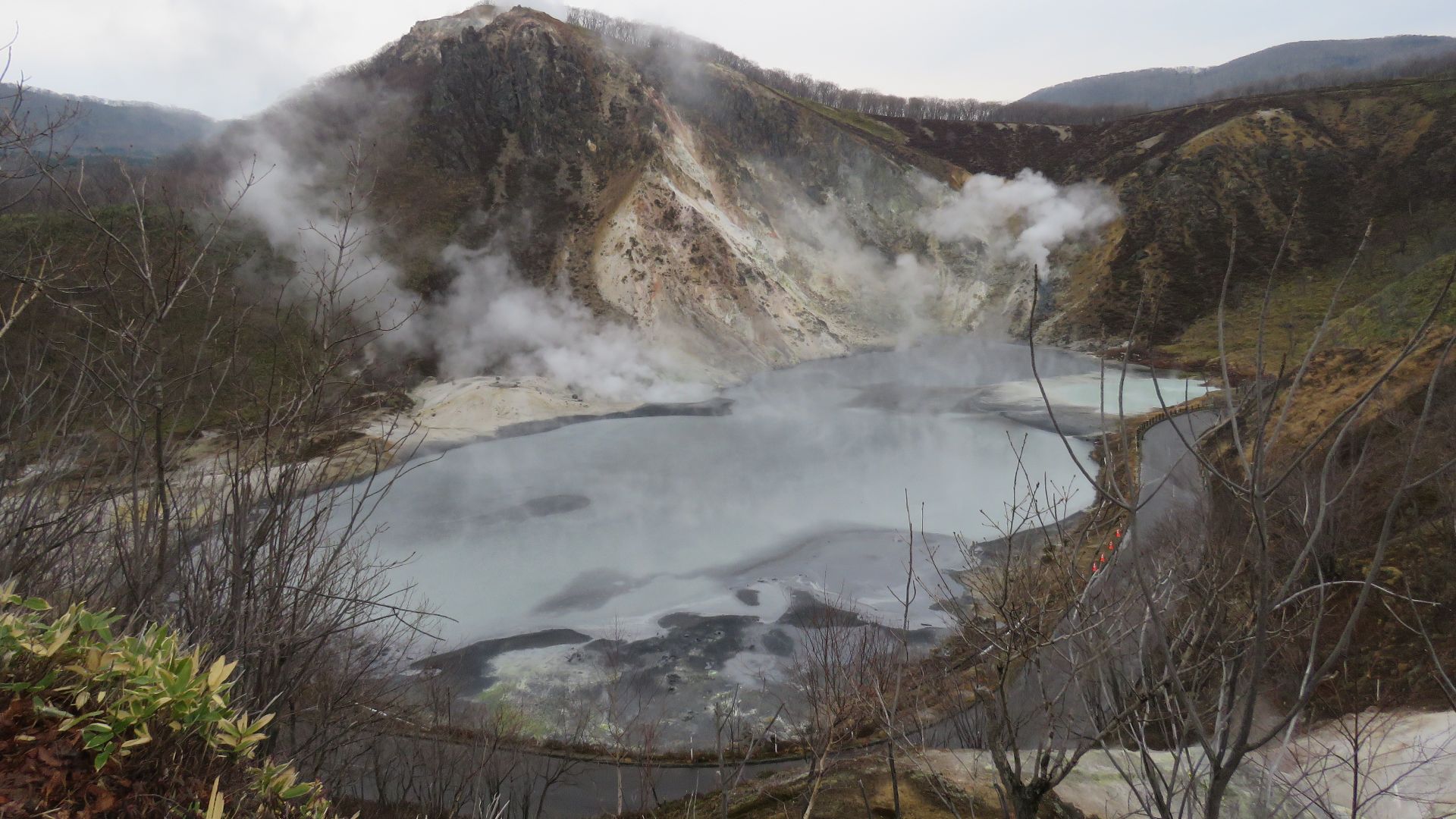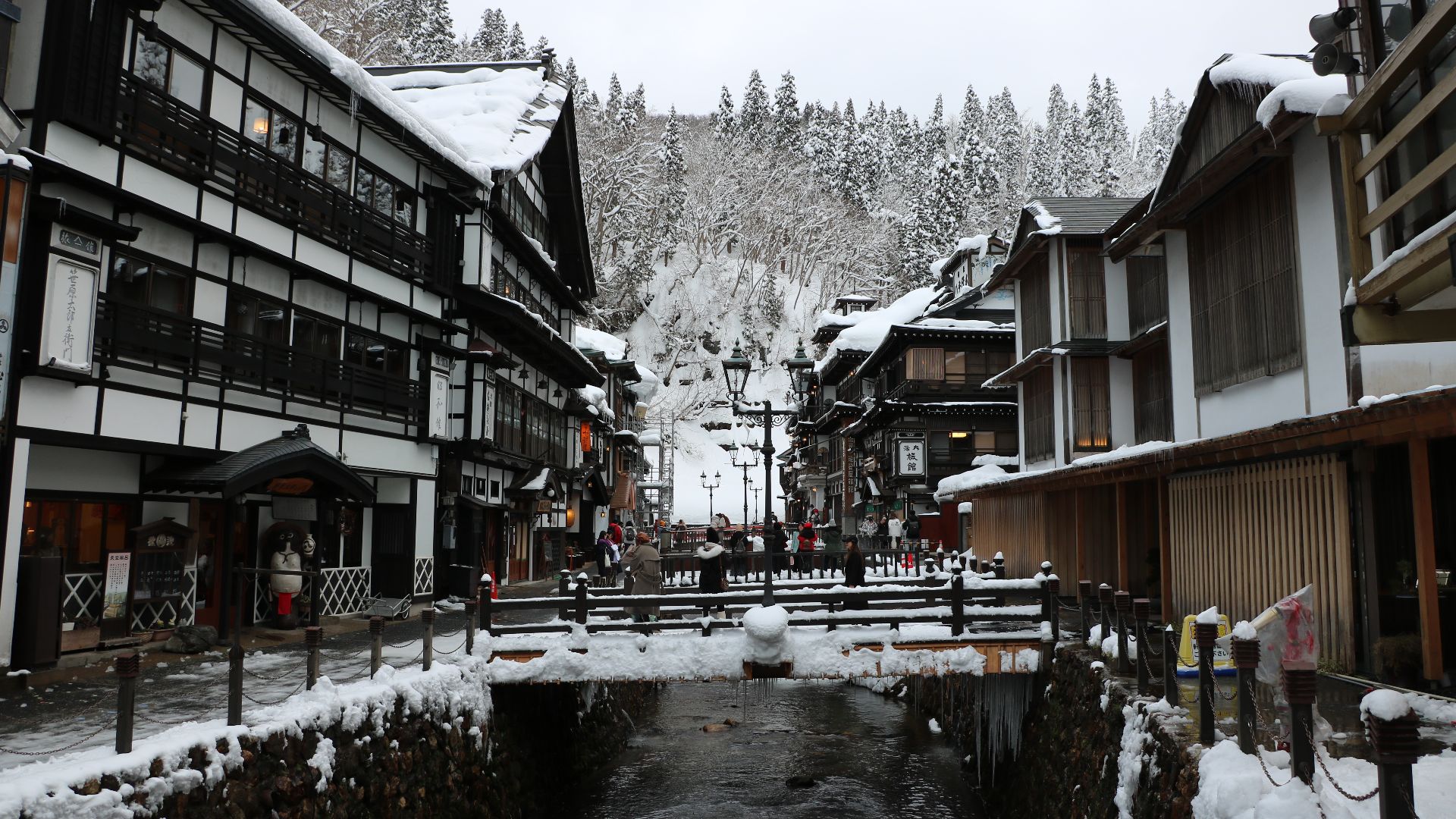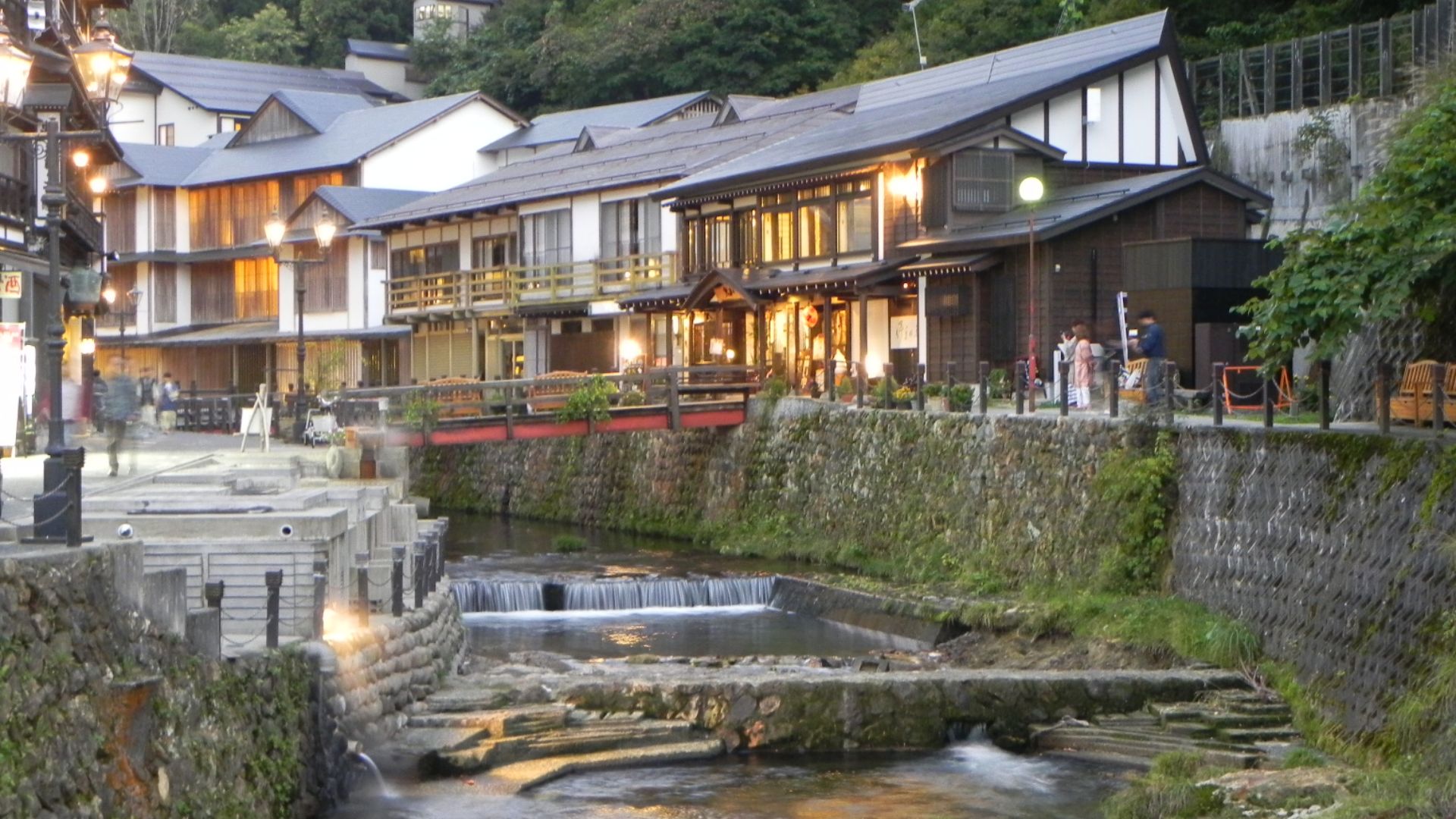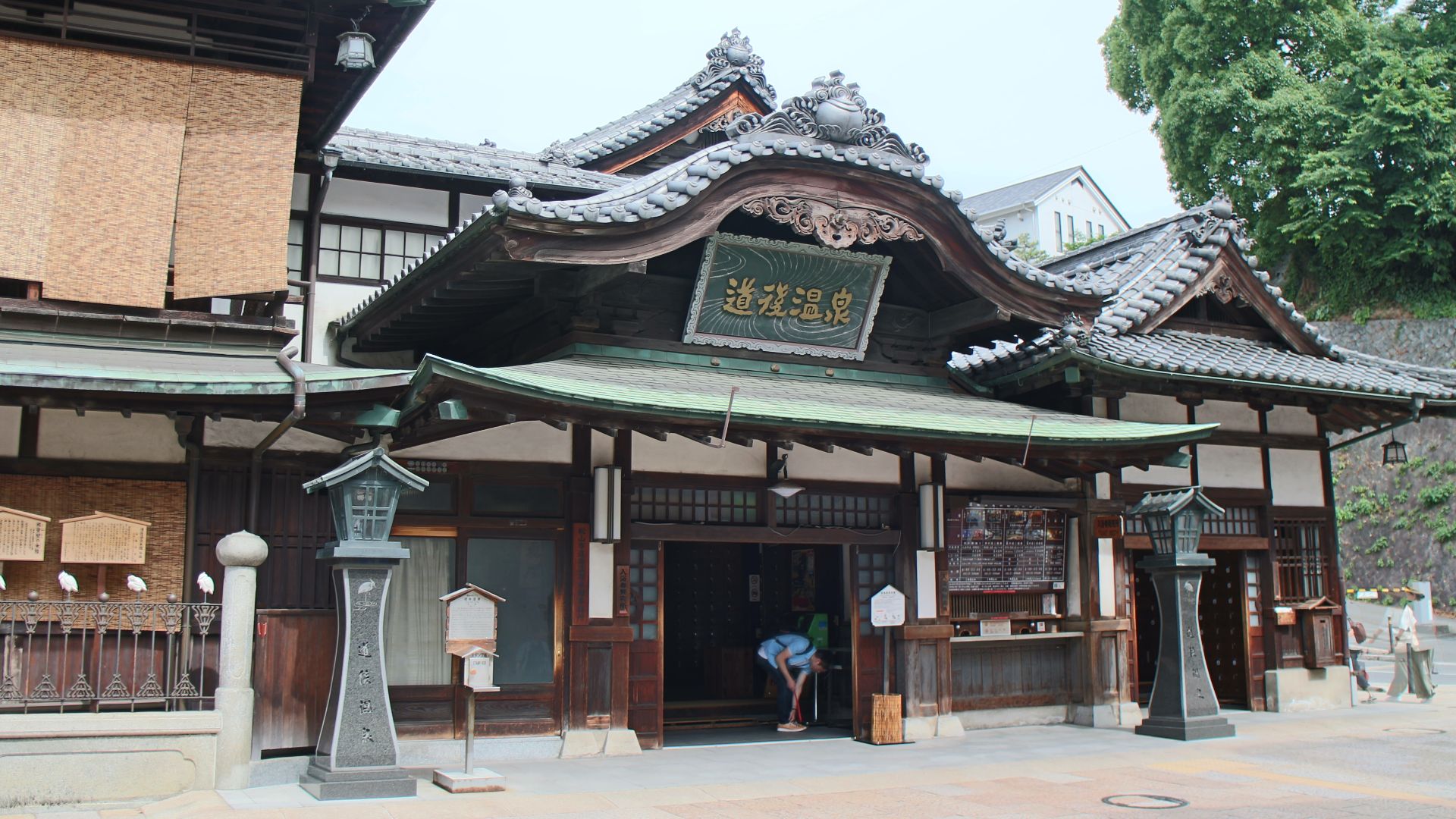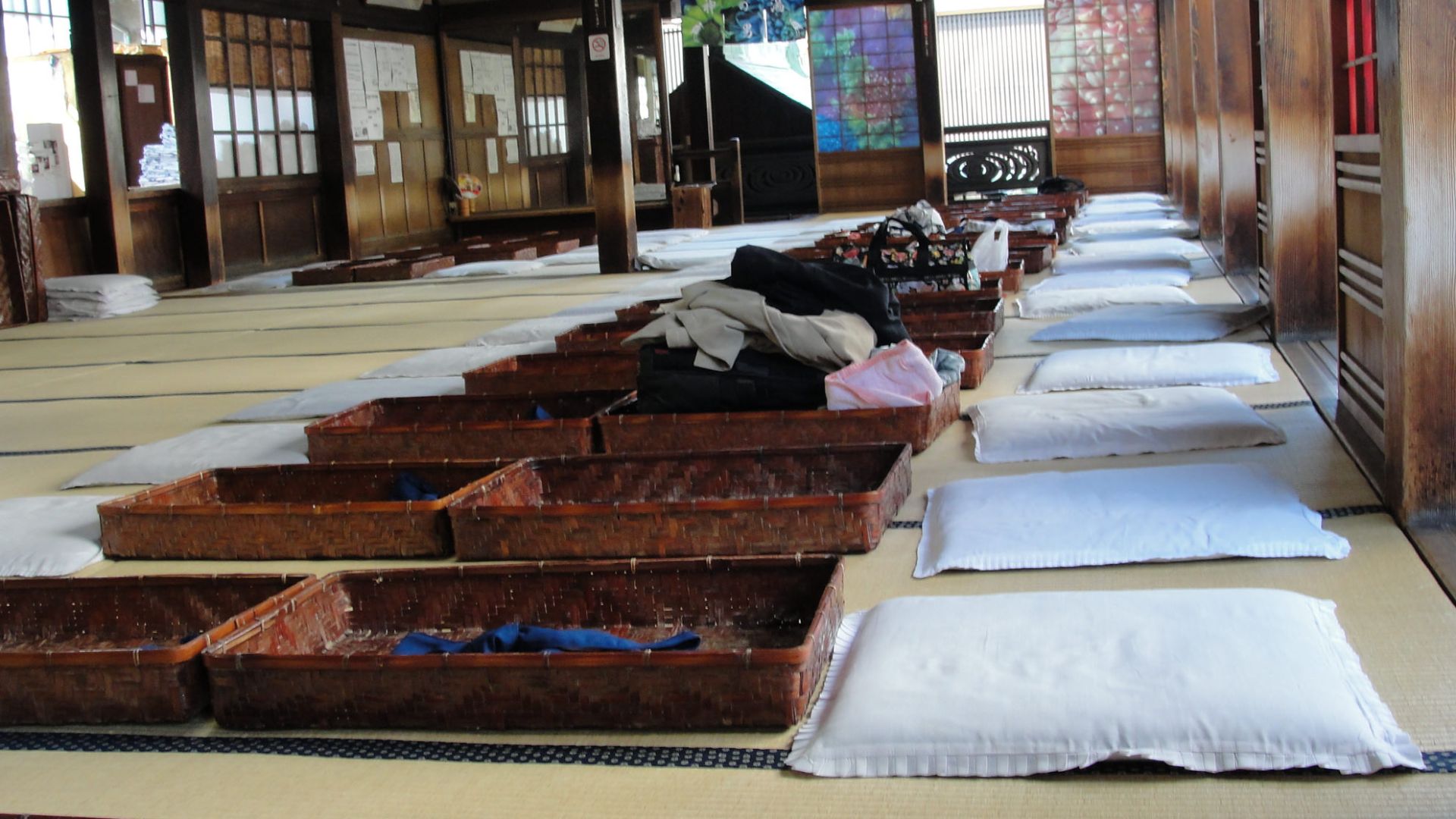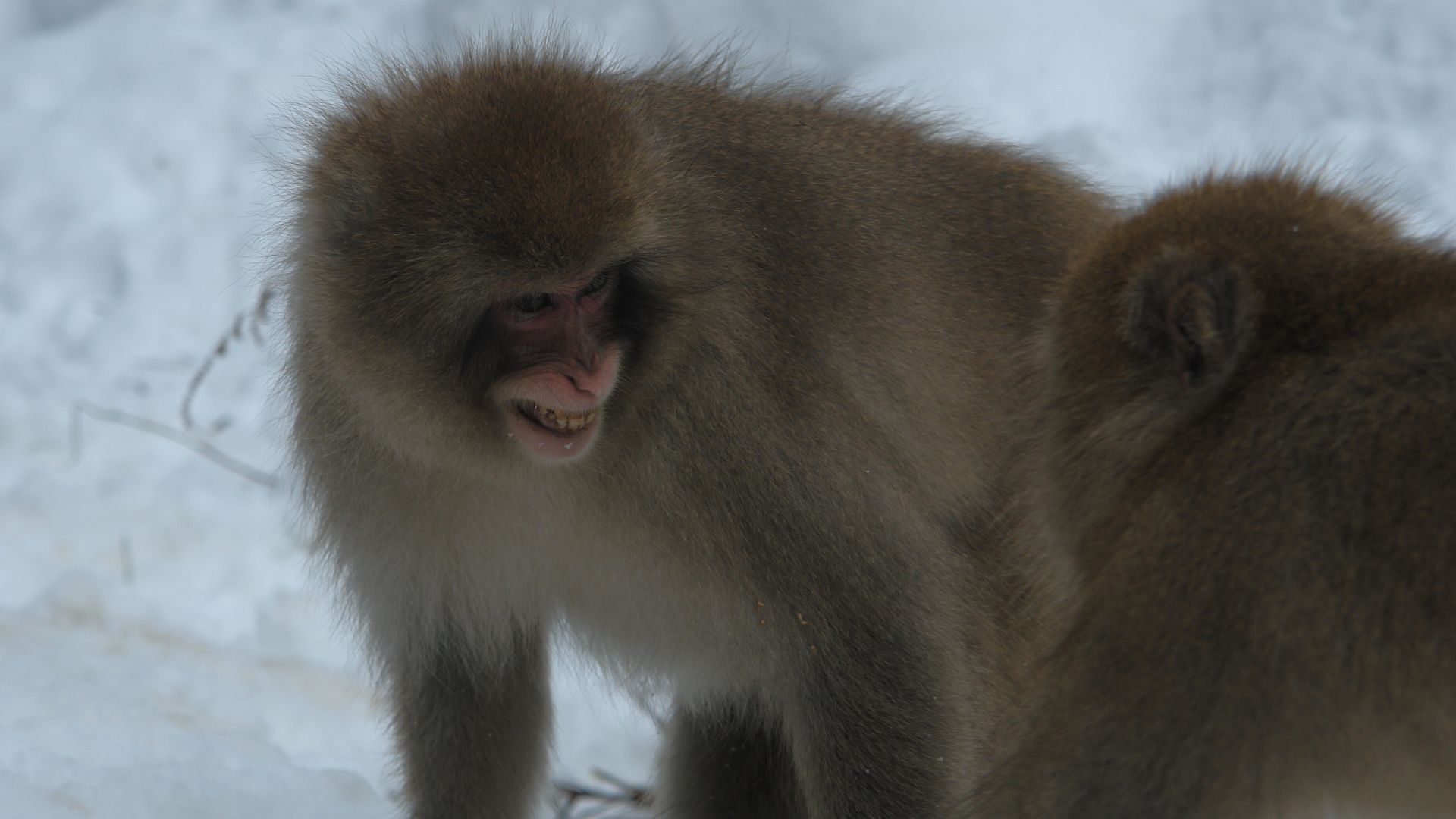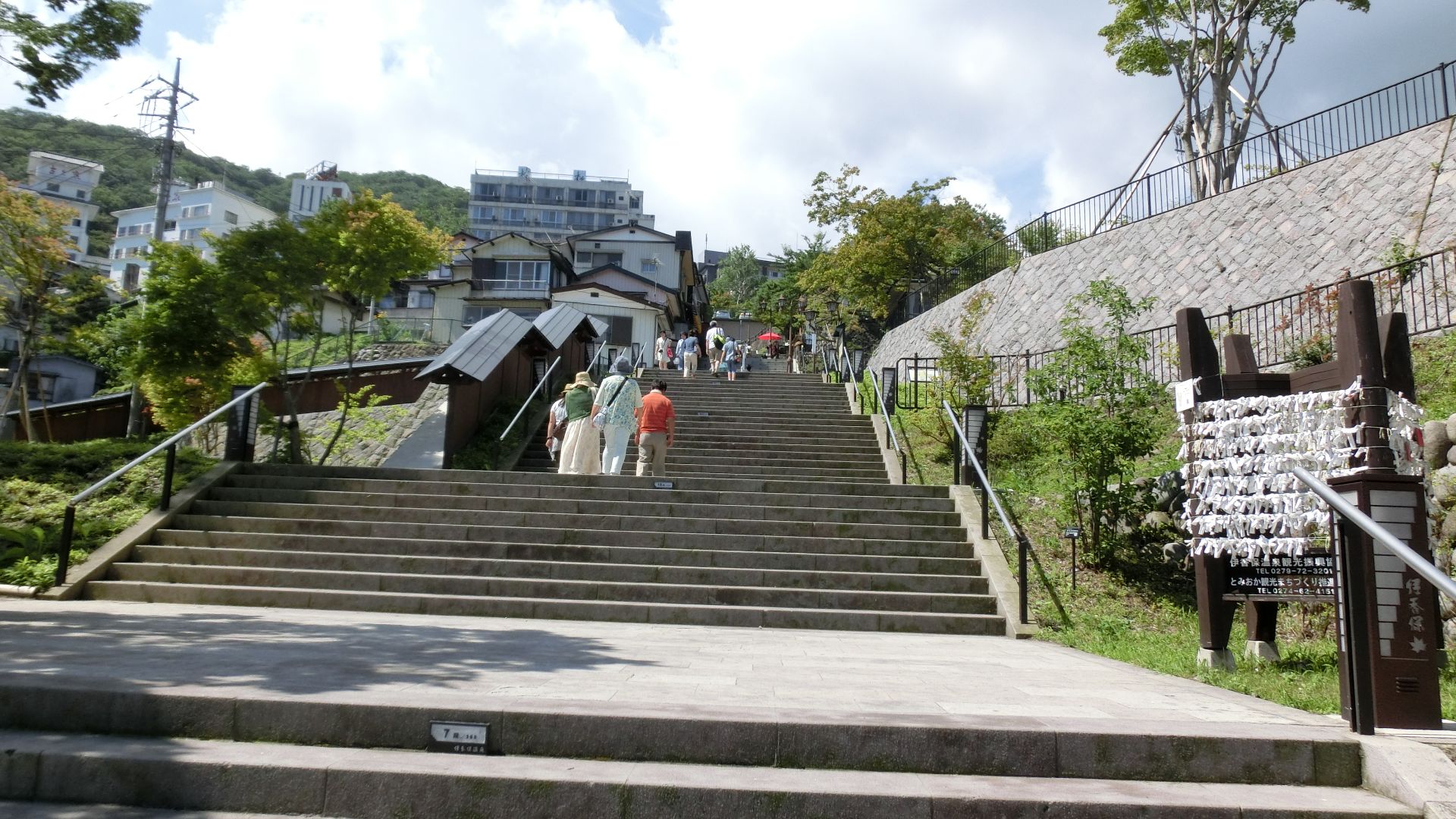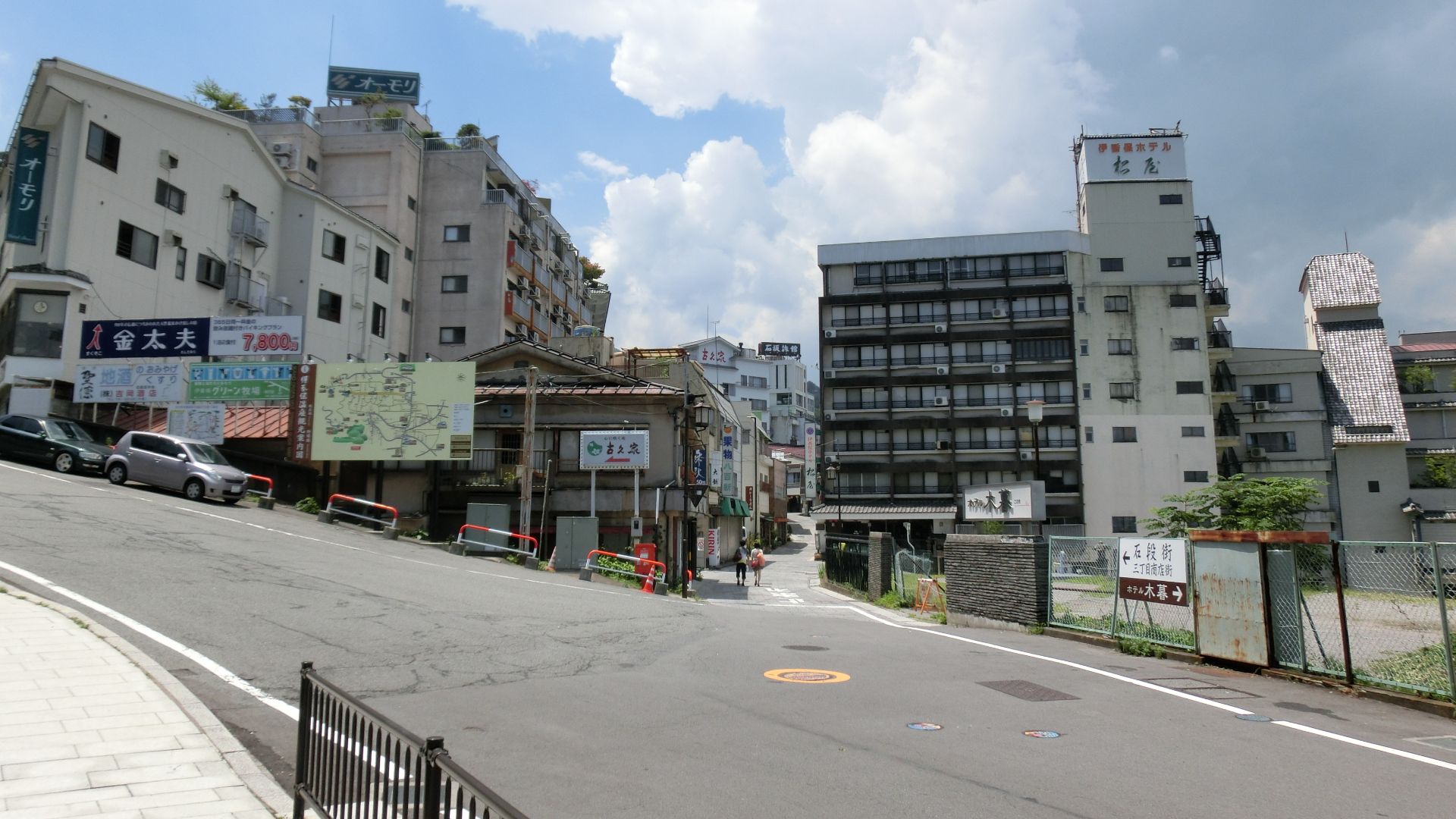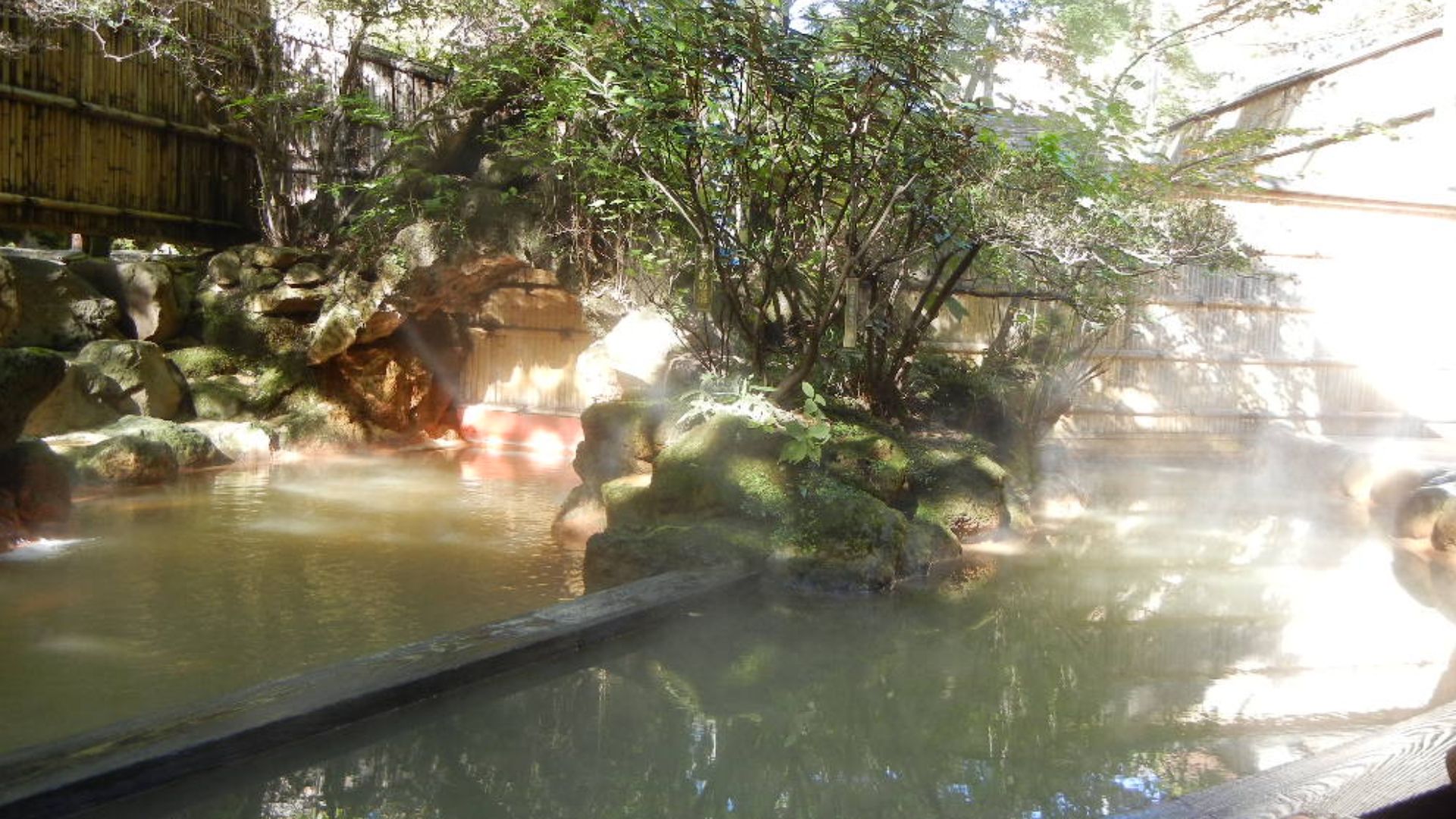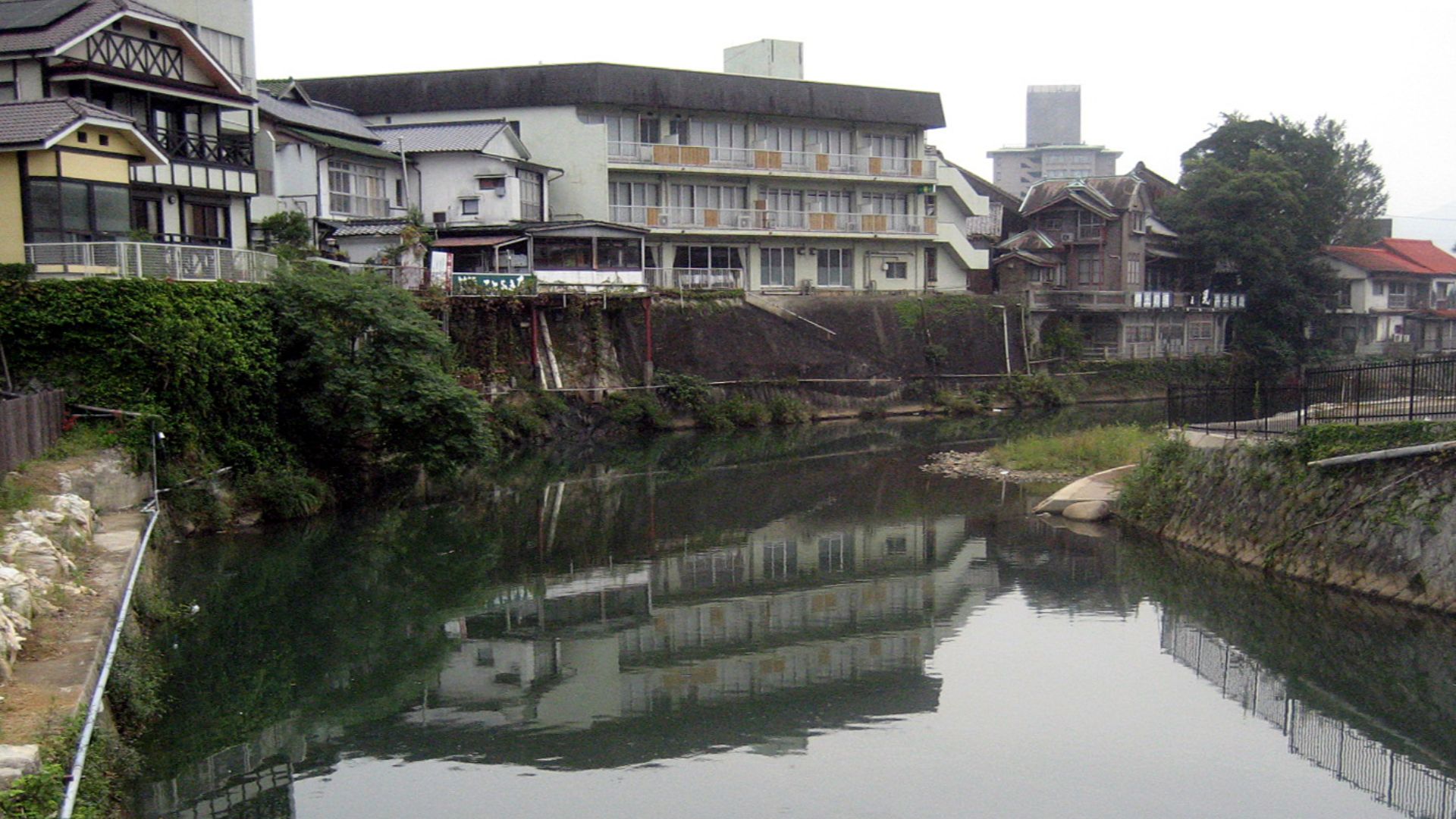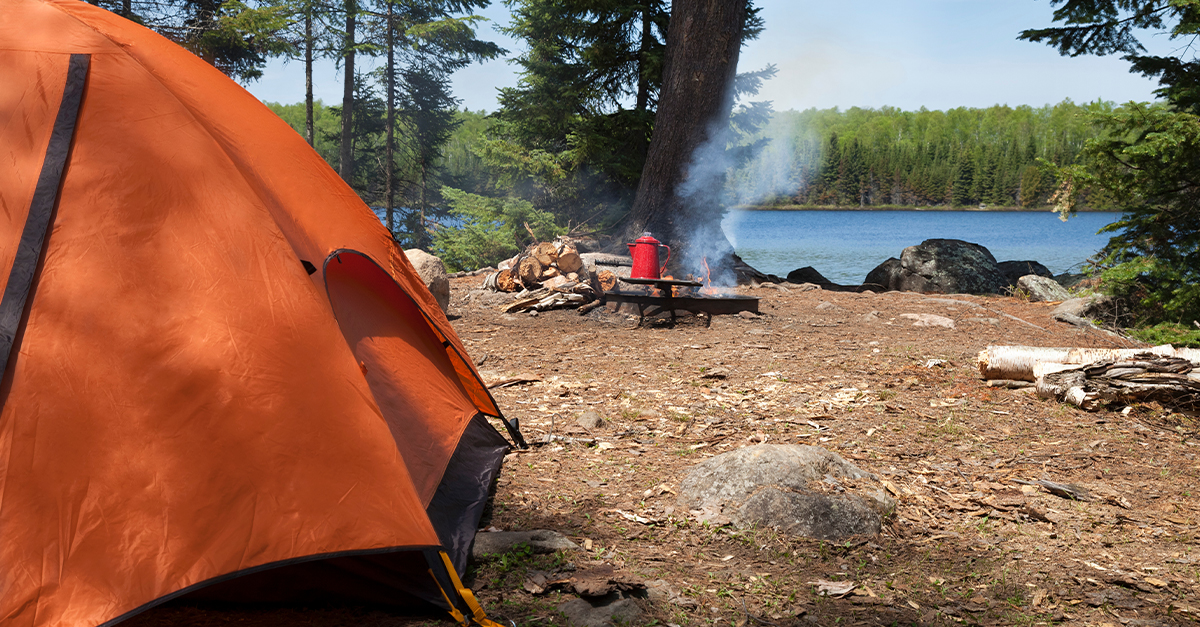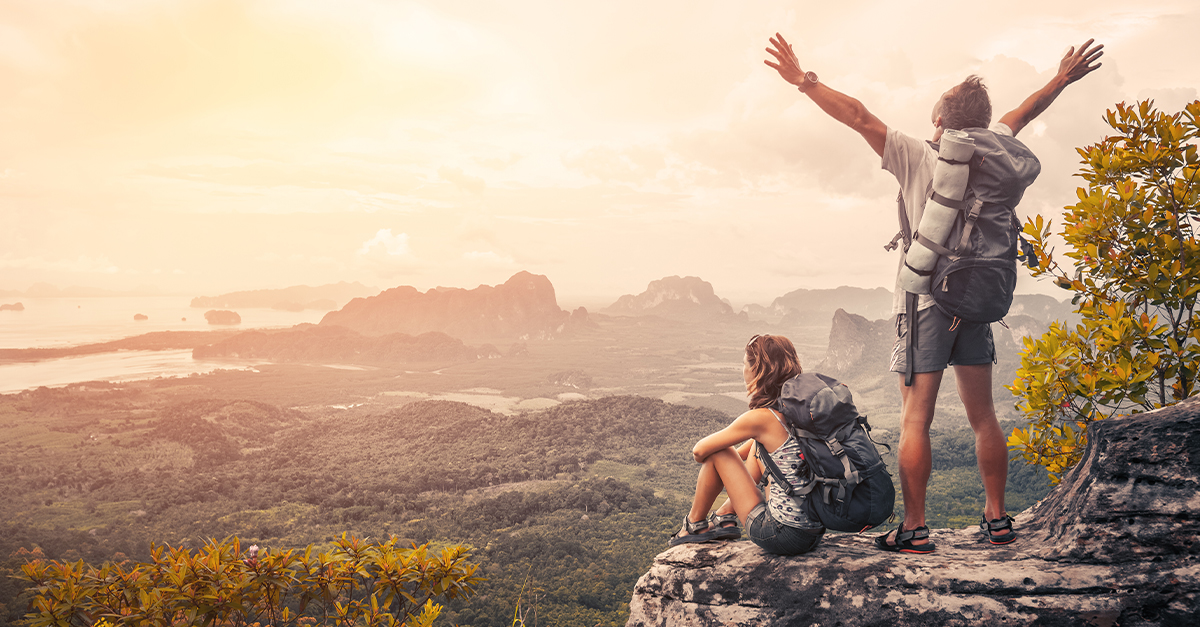Thermal Treasures
Some Japanese hot springs, or onsen, dissolve iron nails in ten days. Others turn golden when they hit the air.
Japan's onsen culture runs deeper than you'd imagine, blending folklore with serious geology across stunning locations.
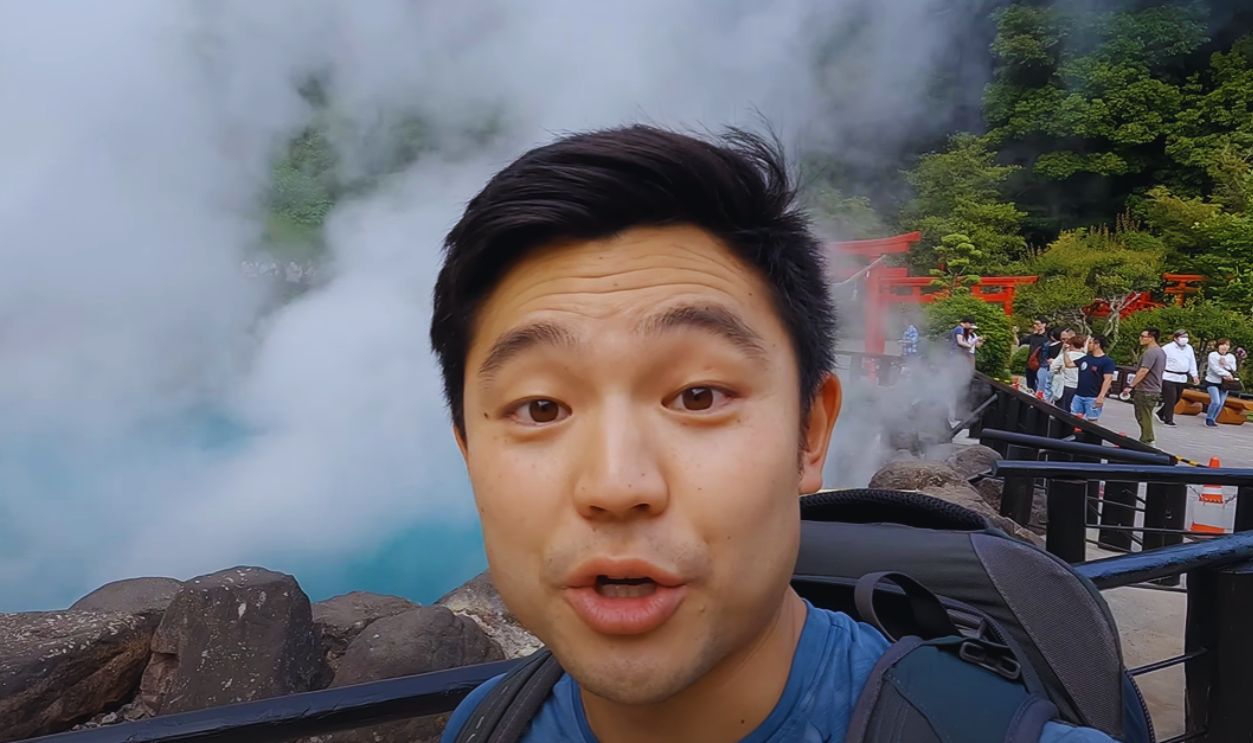
Hot Spring Empire
Japan sits atop an incredible 25,000 natural hot spring sources scattered across the archipelago. Around 3,000 onsen establishments have harnessed this geothermal bounty, crafting a vast network of traditional bathing facilities that define Japanese wellness culture and domestic tourism experiences.
Indoor Versus Outdoor Traditions
Onsen come in two main varieties: outdoor baths called roten-buro or noten-buro, and indoor baths known as uchiyu. While traditional onsen were historically located outdoors, modern inns now give both options. This evolution reflects changing preferences while preserving the authentic practice.
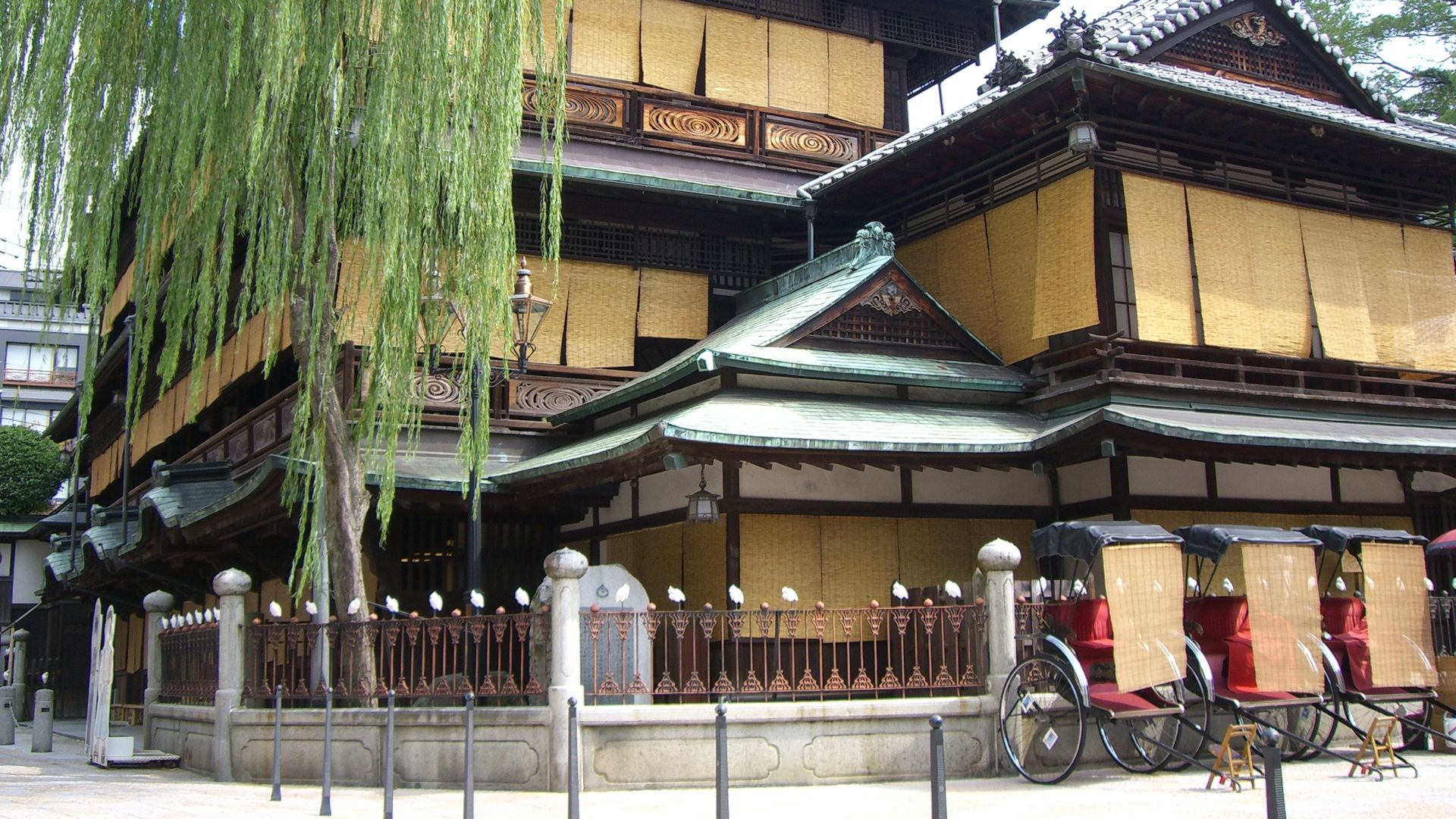 Jyo81 (ja:User), Wikimedia Commons
Jyo81 (ja:User), Wikimedia Commons
Legal Definition
According to Japan's Hot Springs Act, true onsen must be "hot water, mineral water, and water vapor or other gas gushing from underground," excluding hydrocarbon-based natural gas. Such a precise legal framework is said to protect the onsen designation from any commercial misuse.
Underground Mineral Requirements
Japanese law gets surprisingly specific about its authenticity. Water must originate from at least 1.5 kilometers underground and contain exact mineral amounts like sulfur, sodium, iron, or magnesium. It's essentially a geological passport proving your spring's legitimate underground credentials and therapeutic properties.
Oldest Hot Spring Trio
Three onsen claim the distinction of being Japan's oldest. These are Dogo Onsen in Ehime Prefecture, Shirahama Onsen in Wakayama Prefecture, and Arima Onsen in Hyogo Prefecture. Each claims a legacy stretching back a millennium, supported by ancient texts and imperial patronage.
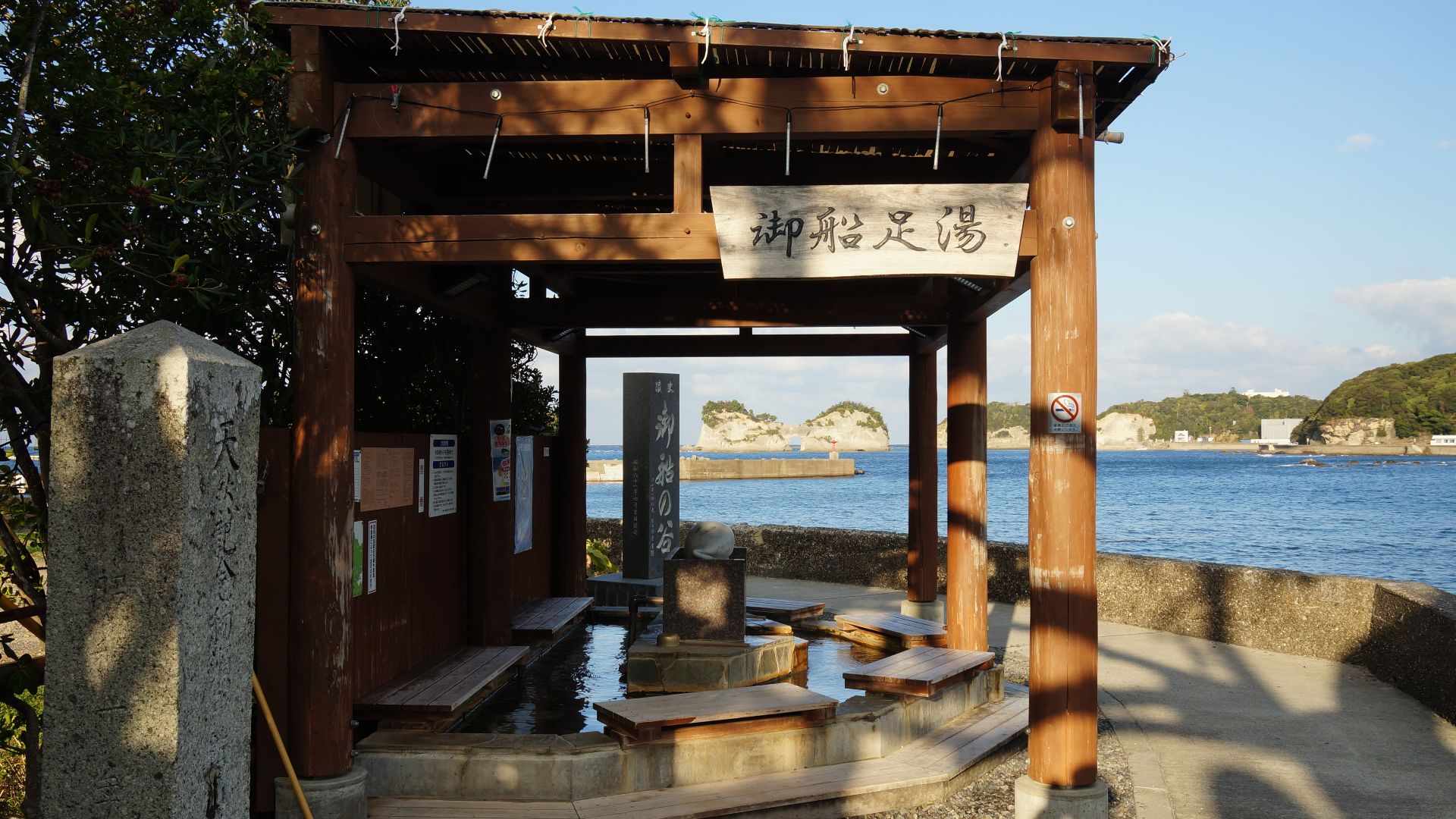 663highland, Wikimedia Commons
663highland, Wikimedia Commons
Kusatsu
Imagine watching a group of traditionally dressed women stirring scalding hot spring water with massive wooden paddles while chanting folk songs from centuries past. This isn't a scene from a historical drama; it's the daily yumomi ceremony at Kusatsu Onsen, where water temperatures reach a blistering 50–90°C.
Kusatsu (Cont.)
The theatrical performance dates back to the Edo period and remains one of the country’s most intriguing traditions. This small mountain town produces an astounding 32,300 liters of mineral-rich water per minute from over 100 sources, making it a highly voluminous hot spring destination.
Kusatsu (Cont.)
The water's extreme acidity is so potent that a six-inch iron nail dissolves to skeletal remains in just ten days, while aluminum coins vanish completely within a week. Yet this very corrosiveness creates waters so pure that E coli bacteria cannot survive even one minute of exposure.
Hakone
Hakone's onsen story begins with destruction—specifically, the massive volcanic eruption that gave rise to Mount Hakone's caldera some 400,000 years ago. The resulting Owakudani valley, known locally as "Hell Valley," continues to belch sulfurous steam and bubble with 80°C waters.
Hakone (Cont.)
Local folklore insists that eating just one of these kuro-tamago extends your life by seven years, though skeptics might argue the real longevity secret lies in Hakone's therapeutic springs themselves. The region's first hot spring allegedly opened in 738 during the Nara period.
 Hakone Onsen, Japan | The Ultimate Hot Spring Experience Near Tokyo by Explore Edge
Hakone Onsen, Japan | The Ultimate Hot Spring Experience Near Tokyo by Explore Edge
Hakone (Cont.)
Apparently, a Buddhist priest had stumbled upon the healing waters. However, Hakone truly earned its reputation after the warlord Toyotomi Hideyoshi conquered nearby Odawara Castle and gathered his samurai here for post-battle recuperation. It served as a critical checkpoint on the Tokaido Highway.
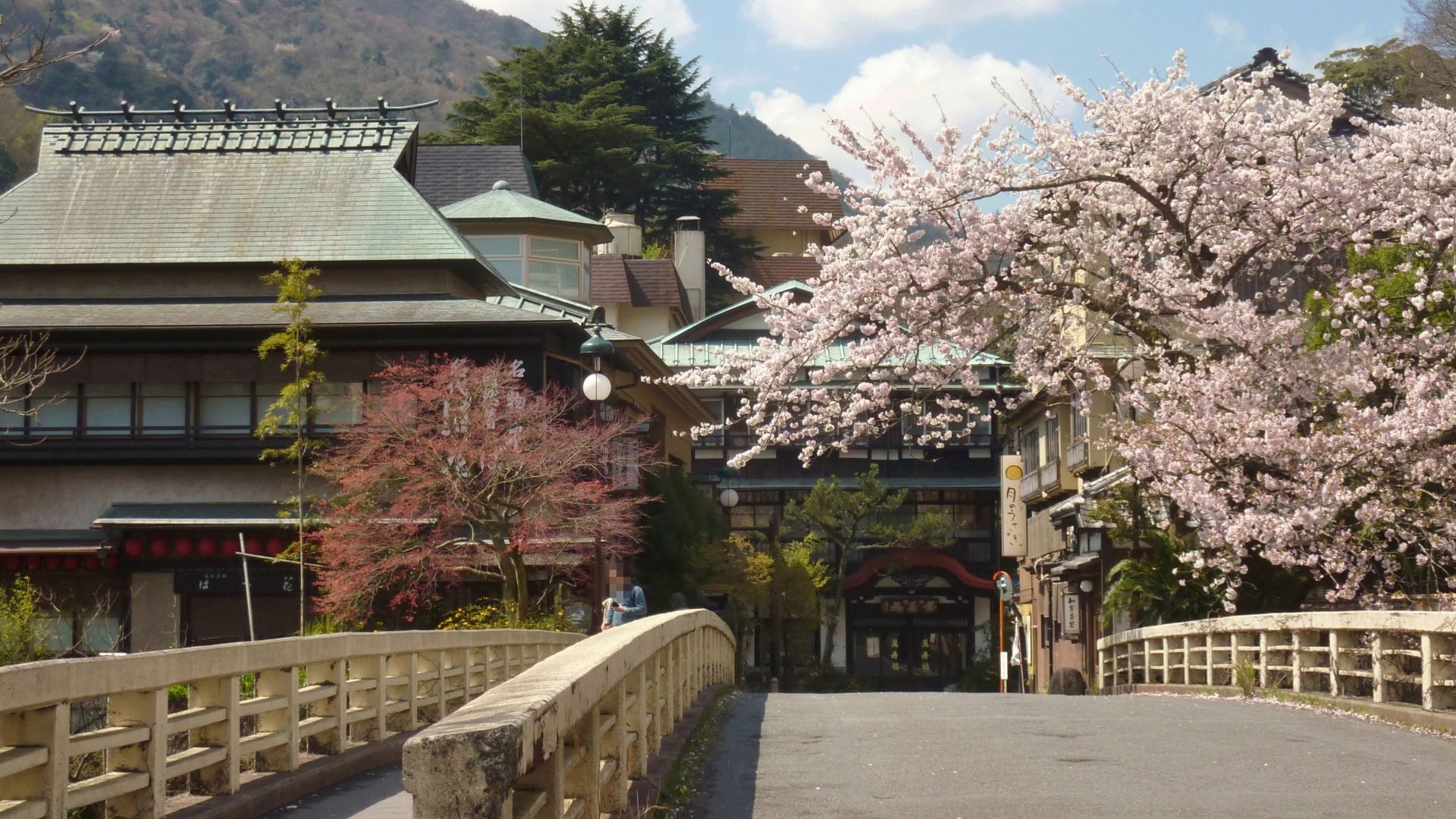 Quercus acuta, Wikimedia Commons
Quercus acuta, Wikimedia Commons
Kinosaki
Seven wooden bathhouses line the willow-draped banks of the Otani River, each one promising a different journey into blissful relaxation. This 1,300-year-old town has deliberately preserved the atmosphere of a giant ryokan, where each public bath becomes a different room in an enormous inn.
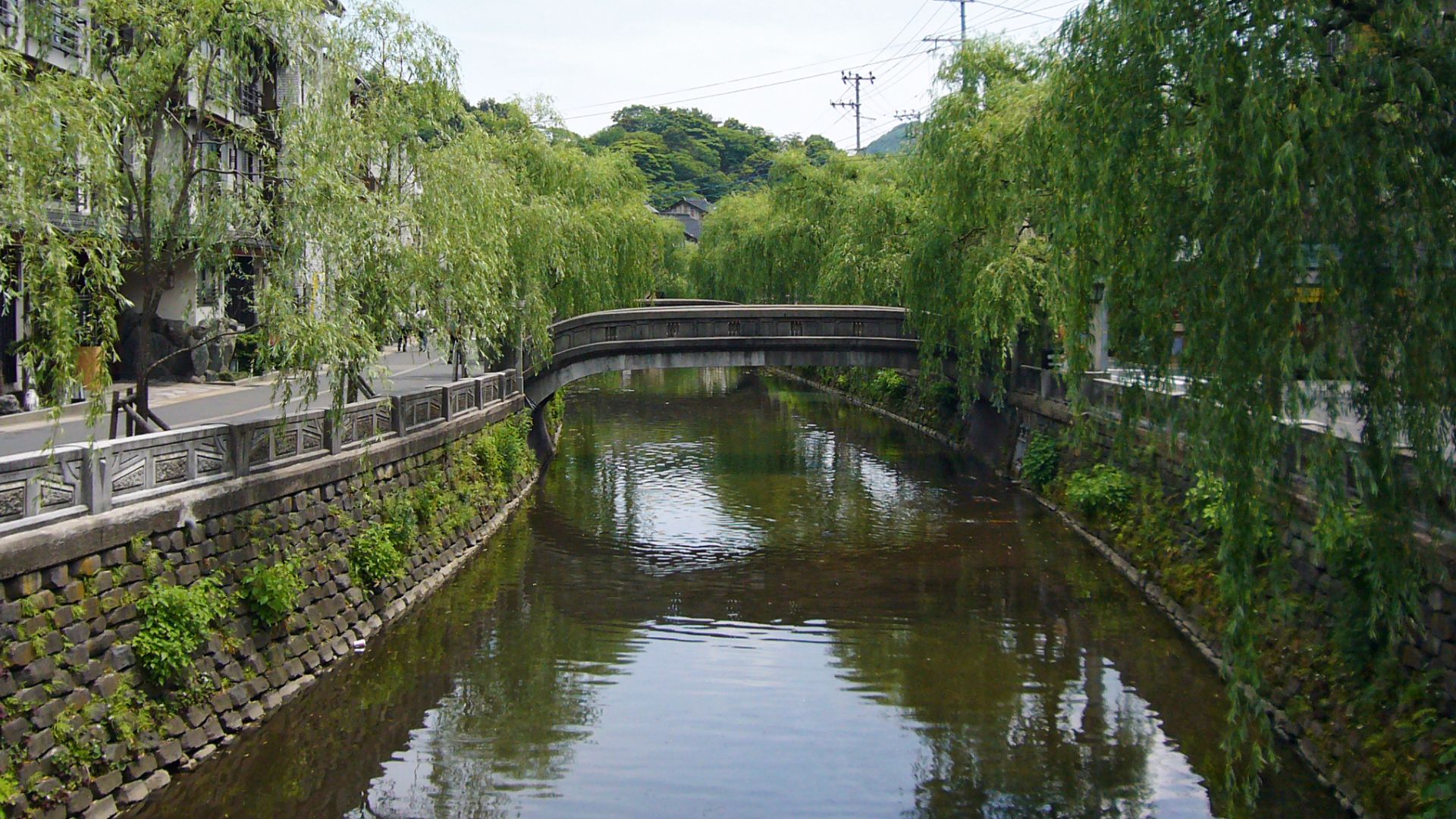 663highland, Wikimedia Commons
663highland, Wikimedia Commons
Kinosaki (Cont.)
Legend traces Kinosaki's origins to 720 AD. There lies a more romantic local narrative that speaks of injured storks bathing in marshes to heal their wounds, leading villagers to build bathhouses over these very spots. Distinct mineral sources feed seven public bathhouses.
Kinosaki (Cont.)
Compared to other Japanese onsen that maintain strict no-tattoo policies, all of Kinosaki's bathhouses welcome tattooed visitors of all shapes and sizes. This rarity makes the location particularly foreign-friendly. Here, Goshono-yu features a dramatic waterfall backdrop, while tiny Yanagi-yu possesses the hottest waters.
Beppu
Apart from hot springs, Beppu has a whole volcanic underworld bubbling under the surface. It is also known for its natural sand baths, where tourists are buried in naturally heated sand for relaxation and therapeutic benefits. By the Heian period (794–1185), Beppu was already a prominent site.
Beppu (Cont.)
The famous "Seven Hells of Beppu" are a collection of spectacularly colored hot springs so violently hot and acidic that olden residents believed demons cursed them. These jigoku (literally "hells") earned their ominous name from centuries past when boiling water and gas bubbled up from the earth.
Beppu (Cont.)
Today, these same springs create some of Japan's most photographed natural phenomena: the cobalt-blue Sea Hell (Umi Jigoku), with temperatures nearing 98°C; the blood-red Chinoike Jigoku, colored by iron and magnesium minerals; and the bizarre Oniishibozu Jigoku, where gray mud resembles the shaved heads of Buddhist monks.
 The 7 HELLS of BEPPU: WATCH BEFORE YOU GO! by oneyearsabbatical
The 7 HELLS of BEPPU: WATCH BEFORE YOU GO! by oneyearsabbatical
Gero
In the pantheon of Japanese hot springs, Gero Onsen holds a position so revered that an Edo-period scholar, Hayashi Razan, declared it one of Japan's "Three Best Onsen," alongside Kusatsu and Arima. This is a designation that has endured for over 400 years.
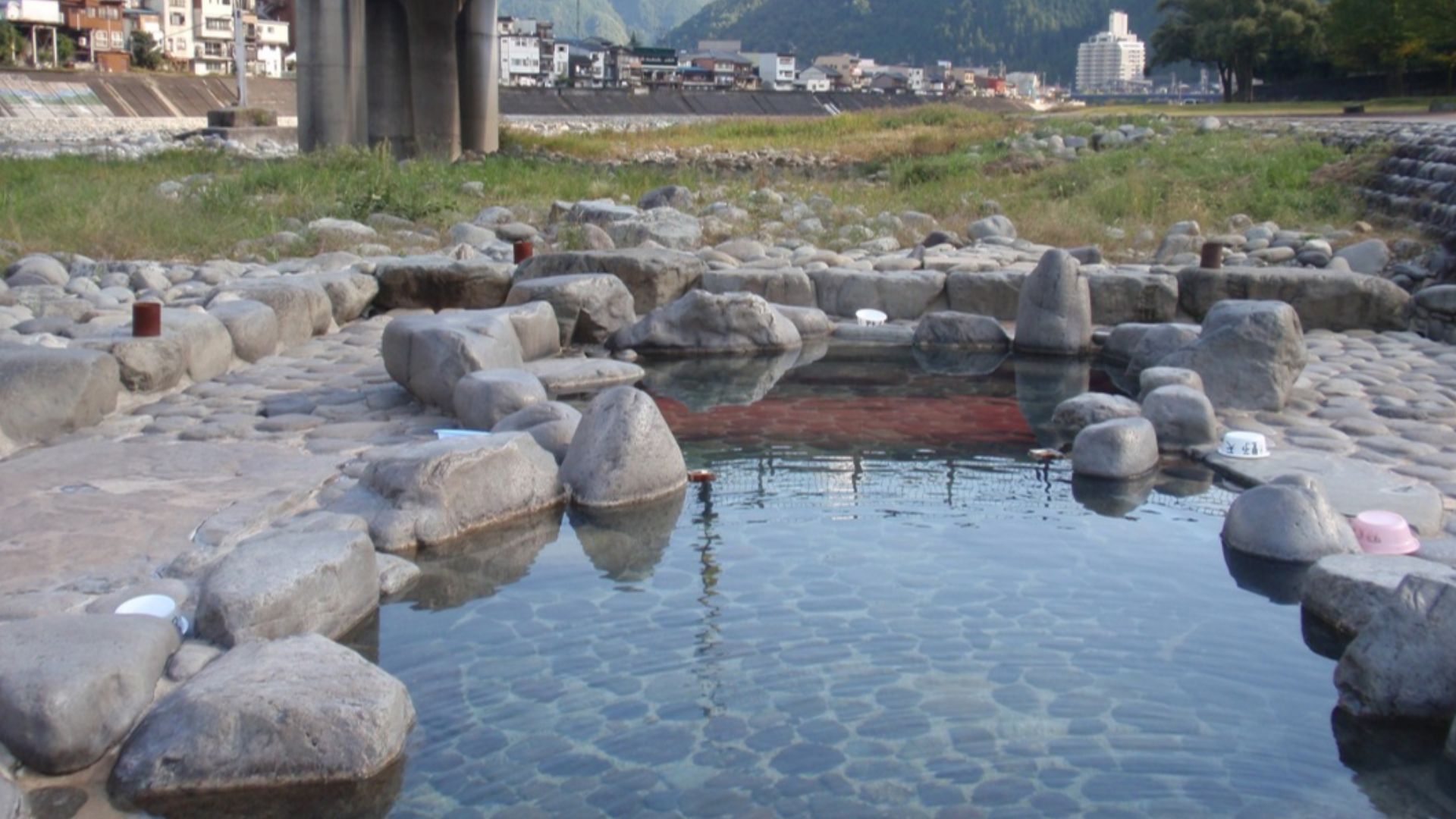 Soica2001 (talk), Wikimedia Commons
Soica2001 (talk), Wikimedia Commons
Gero (Cont.)
Unlike its more famous siblings, Gero's story occurred with an injured egret, divine intervention, and waters so silky that they got the title "Bijin no Yu" (hot springs for the beautiful). Local legend tells of villagers following a mysterious egret that repeatedly dove into the Hida River.
 Travel with me: Gero Onsen in Gifu Japan! by Samurai Matcha
Travel with me: Gero Onsen in Gifu Japan! by Samurai Matcha
Gero (Cont.)
This led them to find both hot springs and a stone statue of Yakushi Nyorai. Whether you believe the egret was a benevolent deity in disguise or simply a bird, the springs it revealed have been celebrated for their healing properties since the days of Nara.
Noboribetsu
The name "Hell Valley" might sound weird, but Jigokudani in Noboribetsu represents something far more magical. This is a volcanic masterpiece where 10,000 tons of mineral-rich water flow daily from the planet’s fiery heart to supply Hokkaido's premier onsen area.
Noboribetsu (Cont.)
This crater was formed by the explosive eruption of Mount Kuttara 10,000 years ago. What truly sets Noboribetsu apart is its incredible variety. A total of 11 therapeutic spring waters emerge from this valley. It is known as the “Department Store of Onsen”.
Yufuin
At the foot of the majestic twin-peaked Mount Yufu lies a hot spring town. It defies conventional onsen expectations, where art galleries and boutique cafes share space with ryokans along streets that some people feel are more like those of a trendy mountain resort.
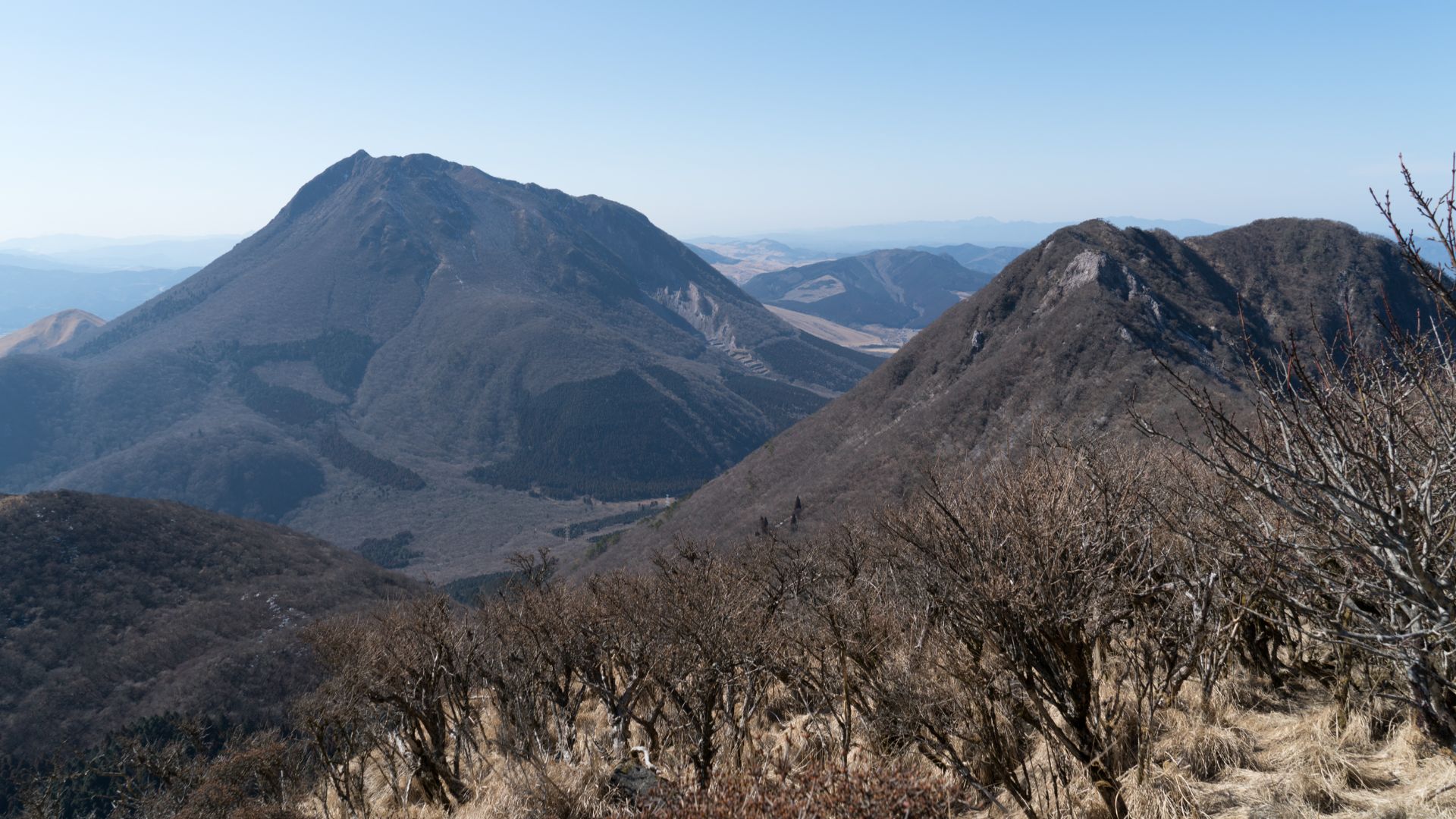 Dime Gontar, Wikimedia Commons
Dime Gontar, Wikimedia Commons
Yufuin (Cont.)
Yufuin Onsen produces the second-highest amount of hot spring water in Japan, yet its appeal goes beyond its healing sodium-rich springs. Folks have even compared it to a Japanese version of California's Carmel-by-the-Sea. The town's main street stretches from Yufuin Station to the mystical Lake Kinrin.
Yufuin (Cont.)
The newly opened Comico Art Museum, designed by famous architect Kengo Kuma, showcases works by international artists, including Takashi Murakami. Meanwhile, the mysterious Lake Kinrin retains its microclimate, with morning mist rising from waters fed by both hot and cold springs.
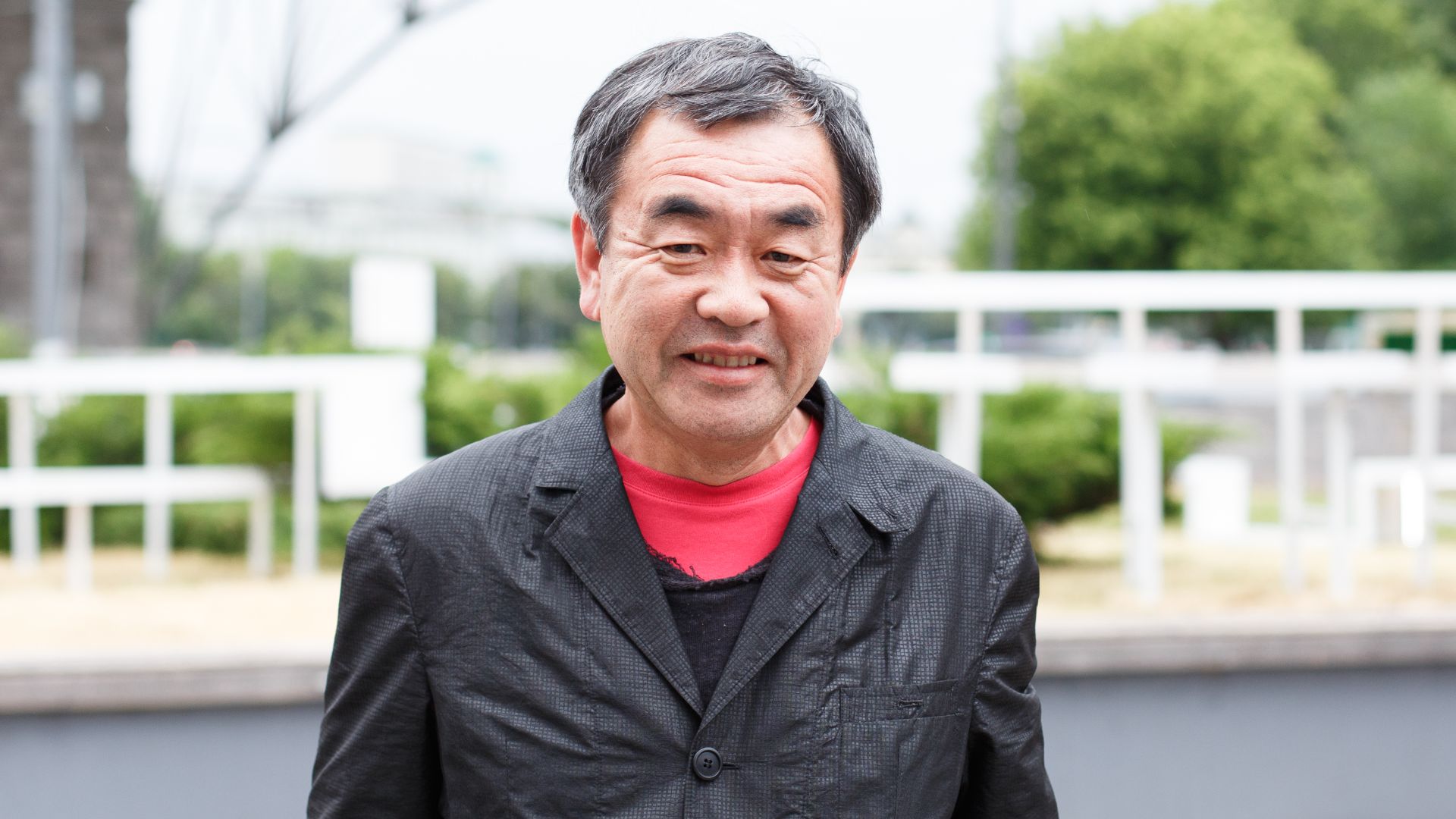 Strelka Institute for Media, Architecture and Design, Wikimedia Commons
Strelka Institute for Media, Architecture and Design, Wikimedia Commons
Arima
Hidden behind the scenic Mount Rokko range, just 30 minutes from the bustling streets of Kobe, we get to witness Japan's oldest hot spring resort. This place was so revered that it was mentioned in 8th-century documents and visited by emperors for about 1,300 years.
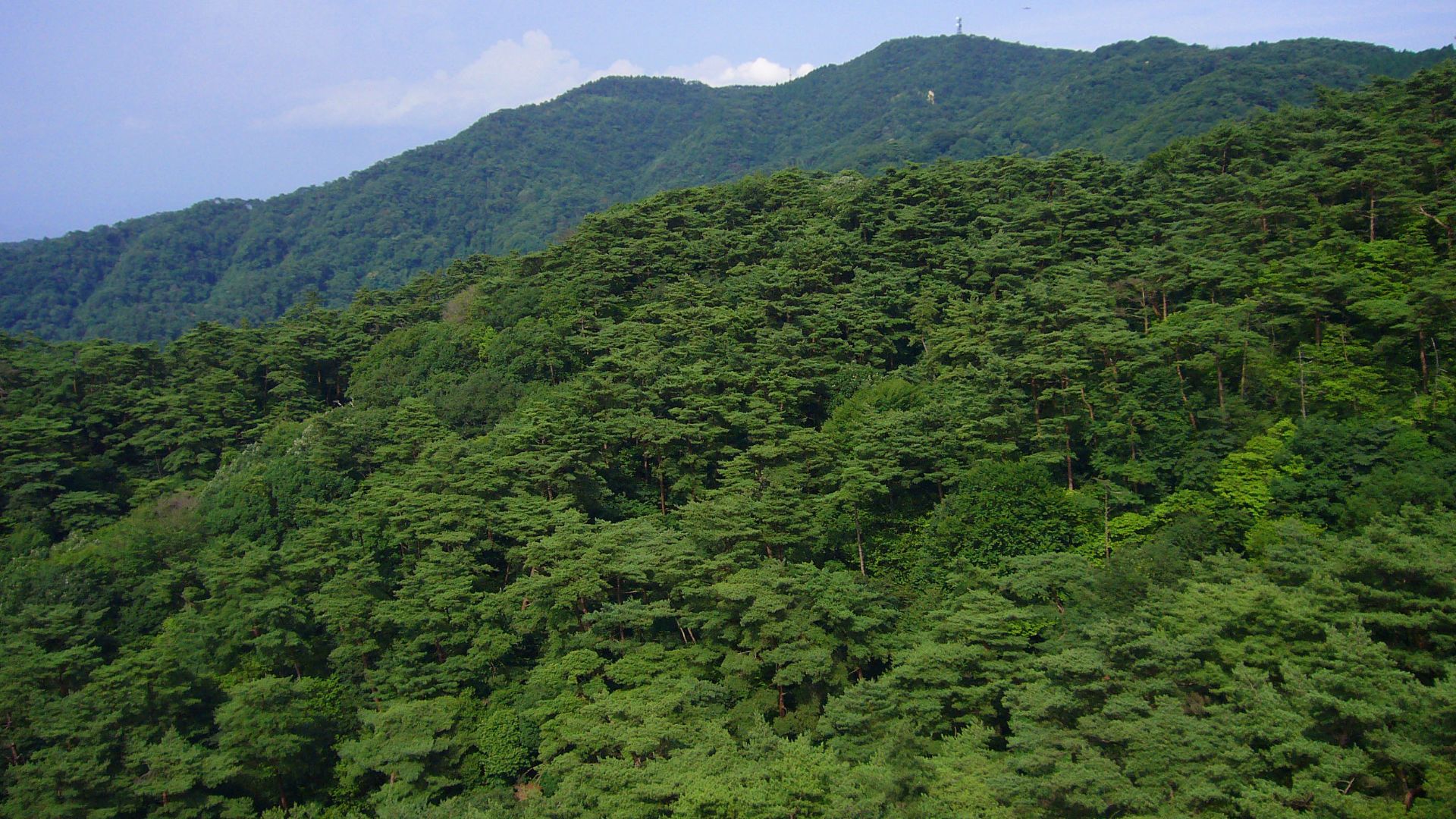 663highland, Wikimedia Commons
663highland, Wikimedia Commons
Arima (Cont.)
Arima Onsen stands apart from every other hot spring in the country due to its unique geological origins. While most springs draw their heat from nearby volcanoes, Arima's waters are ancient seawater that has been percolating 60 kilometers underground for six million years.
 663highland, Wikimedia Commons
663highland, Wikimedia Commons
Arima (Cont.)
They ultimately emerged as two different types of therapeutic springs. The famous Kinsen ("gold spring") contains iron and salt concentrations 1.5 times greater than seawater, oxidizing upon contact with air to create golden-brown waters. Plus, the clear Ginsen ("silver spring") contains radium and carbonate.
 What to Do in Arima Onsen, near Kobe, Japan [PRIVATE ONSEN] by Vicky FlipFlop
What to Do in Arima Onsen, near Kobe, Japan [PRIVATE ONSEN] by Vicky FlipFlop
Ginzan Onsen
Step into Ginzan Onsen and you'll swear you've wandered onto a Studio Ghibli movie set, where three and four-story wooden ryokan line both banks of the Ginzan River. This photogenic village was discovered by silver miners and rebuilt after devastating floods in the early 20th century.
Ginzan Onsen (Cont.)
It now exists as a living museum of traditional architecture. The town has a pedestrian-only center. Its strict preservation ordinances ensure that no modern buildings disturb the harmony of conventional timber-and-plaster construction. At the same time, there is a 22-meter Shirogane Falls at the village's end.
Kurokawa
The town's "onsen hopping" system, centered around the Nyuto Tegata Pass, revolutionized how people experience multiple hot springs, supporting the entire community rather than individual establishments. For 1,500 yen, this cedar pass grants access to any three of the town's 28 participating outdoor baths (rotenburo).
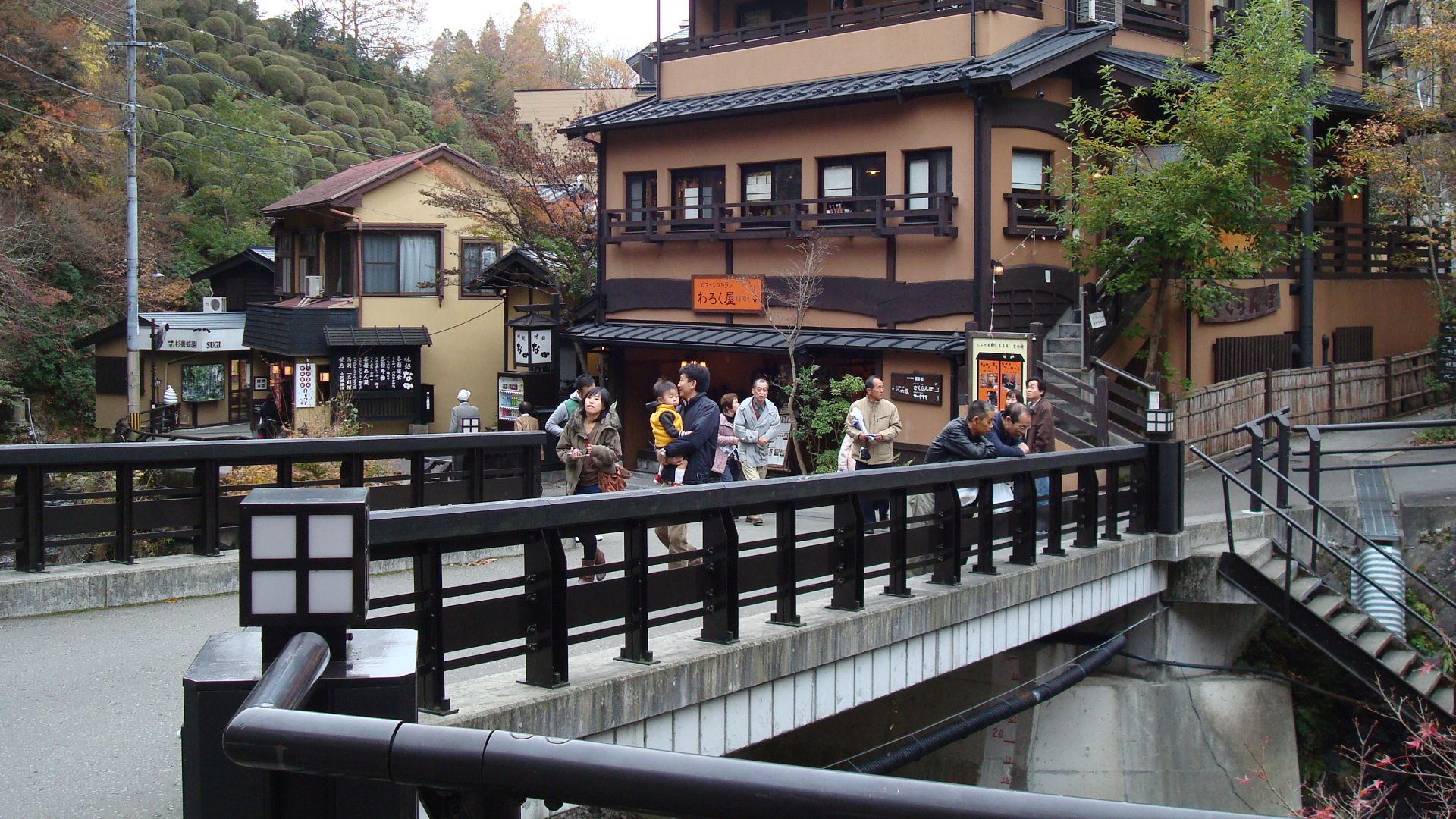 Tzu-hsun, Hsu, Wikimedia Commons
Tzu-hsun, Hsu, Wikimedia Commons
Kurokawa (Cont.)
Faced with the threat of commercialization and concrete hotels in the 1960s, local ryokan owners banded together to implement strict building codes that maintain natural materials, earth tones, and old-school architecture throughout. About 30 traditional inns offer guests both lodging and exclusive baths.
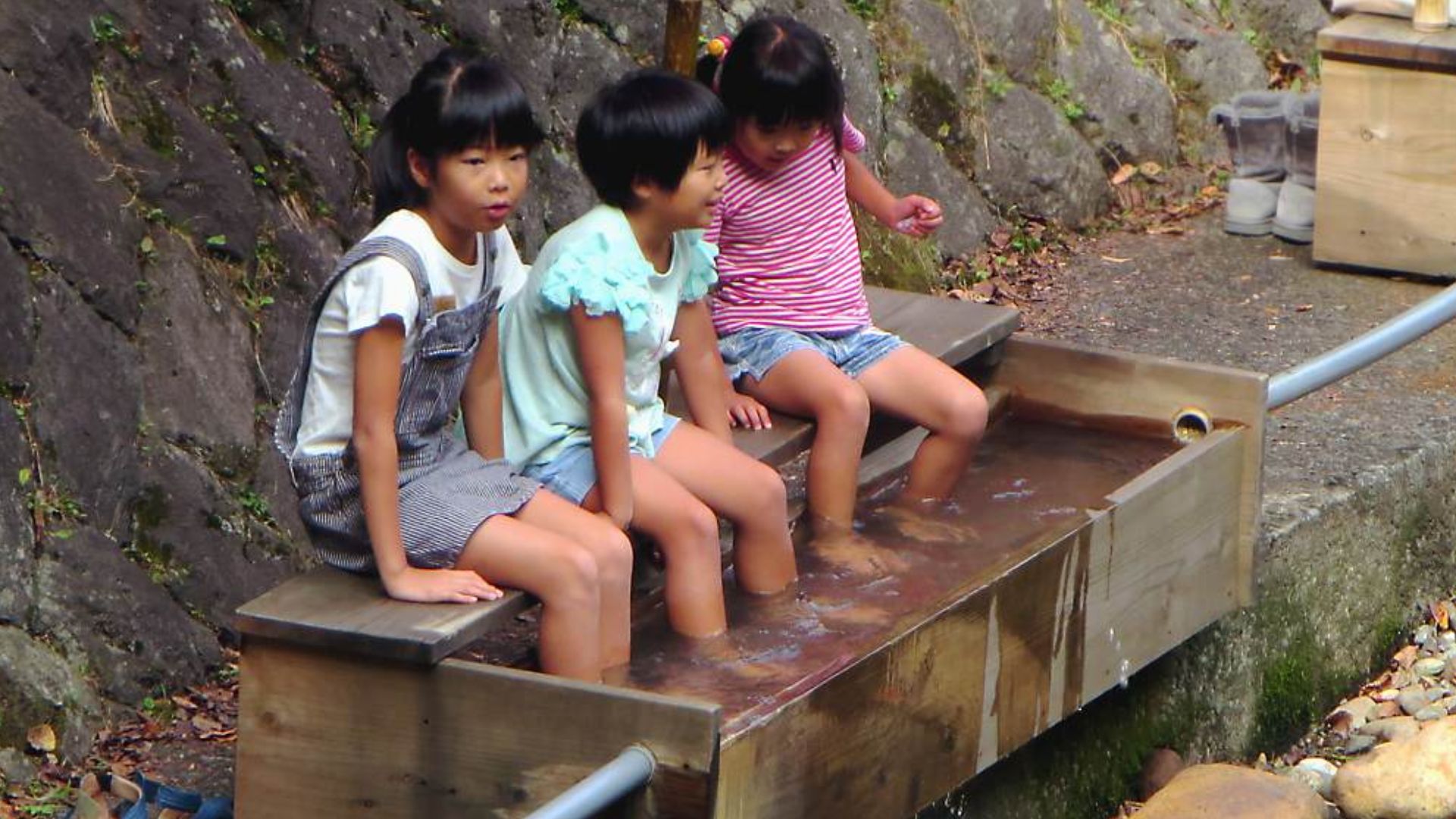 David Stanley from Nanaimo, Canada, Wikimedia Commons
David Stanley from Nanaimo, Canada, Wikimedia Commons
Dogo
In the heart of Matsuyama, on Shikoku Island, is another pretty old hot spring resort. It is literally mentioned in the Man'yoshu poetry collection. Local legend believes that injured white egrets discovered its healing waters. Dogo Onsen Honkan was built in 1894.
Dogo (Cont.)
As Japan's first public bathhouse, it presents a labyrinthine wooden interior of winding staircases, narrow corridors, and staff that directly inspired the bathhouse in Studio Ghibli's “Spirited Away”. The building's three-story structure features separate baths for different social classes—a practice that continues today.
Dogo (Cont.)
The famous Yushinden wing, built exclusively for the Imperial Family in 1899, remains as visible proof of the spring's prestigious reputation, though no emperor has bathed there since 1952. Beyond the main Honkan building, the 2017 Asuka-no-Yu bathhouse displays projection mapping.
Shibu Onsen
Shibu Onsen is a historic hot spring place in Yamanouchi, Nagano Prefecture. Known for its charming cobblestone streets, traditional wooden ryokan, and retro atmosphere, the town provides a glimpse into old Japan and is a popular destination meant for relaxation and cultural immersion.
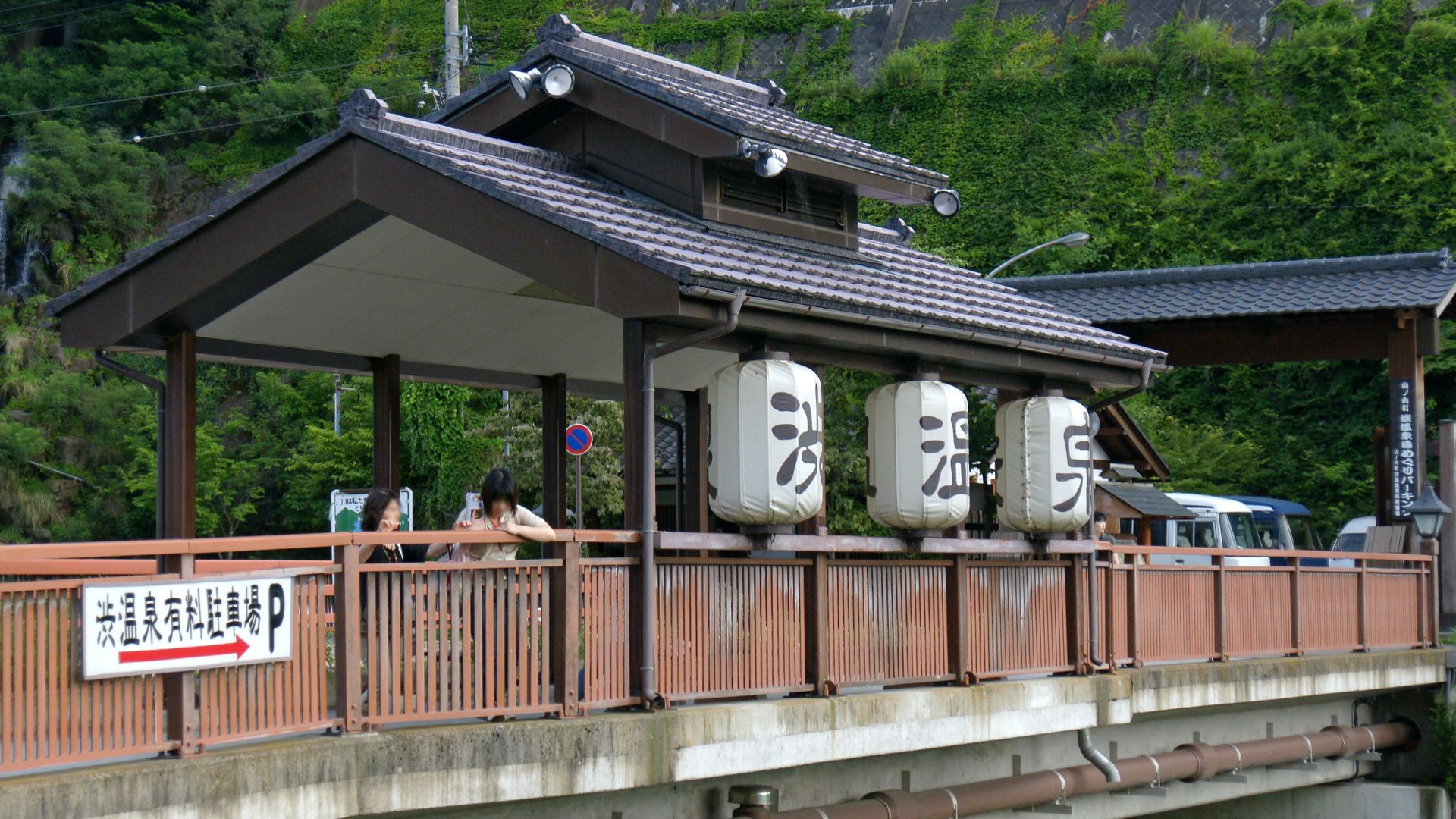 663highland, Wikimedia Commons
663highland, Wikimedia Commons
Shibu Onsen (Cont.)
It is in close proximity to the famous Jigokudani Snow Monkey Park, where wild Japanese macaques have learned to bathe in hot springs during winter months. Earlier, Shibu Onsen was a rest stop for pilgrims traveling to Zenkoji Temple and was used by samurai and travelers.
Atami
Just 50 minutes from Tokyo by shinkansen, Atami represents the perfect marriage of convenience and tradition. Shogun Tokugawa Ieyasu famously favored these waters, and the town's name literally means "hot ocean," referring to the chloride-rich springs with a high mineral content.
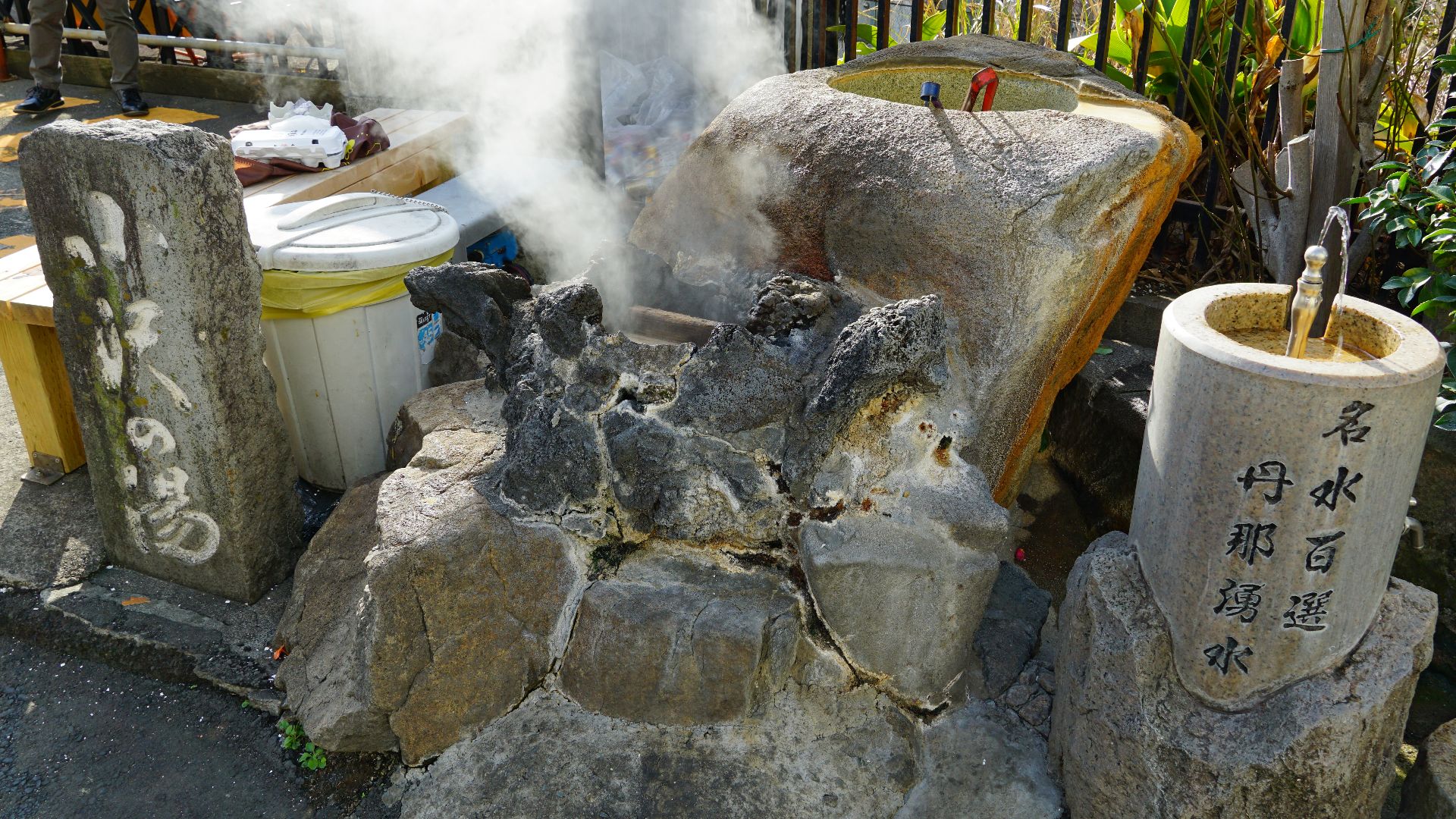 663highland, Wikimedia Commons
663highland, Wikimedia Commons
Atami (Cont.)
During Japan's bubble economy of the 1980s, Atami became synonymous with luxury corporate retreats, leading to grand development along the coastline. What makes Atami particularly appealing is its role as Japan's earliest spring herald, with the Atami Plum Garden hosting the country's first plum blossoms.
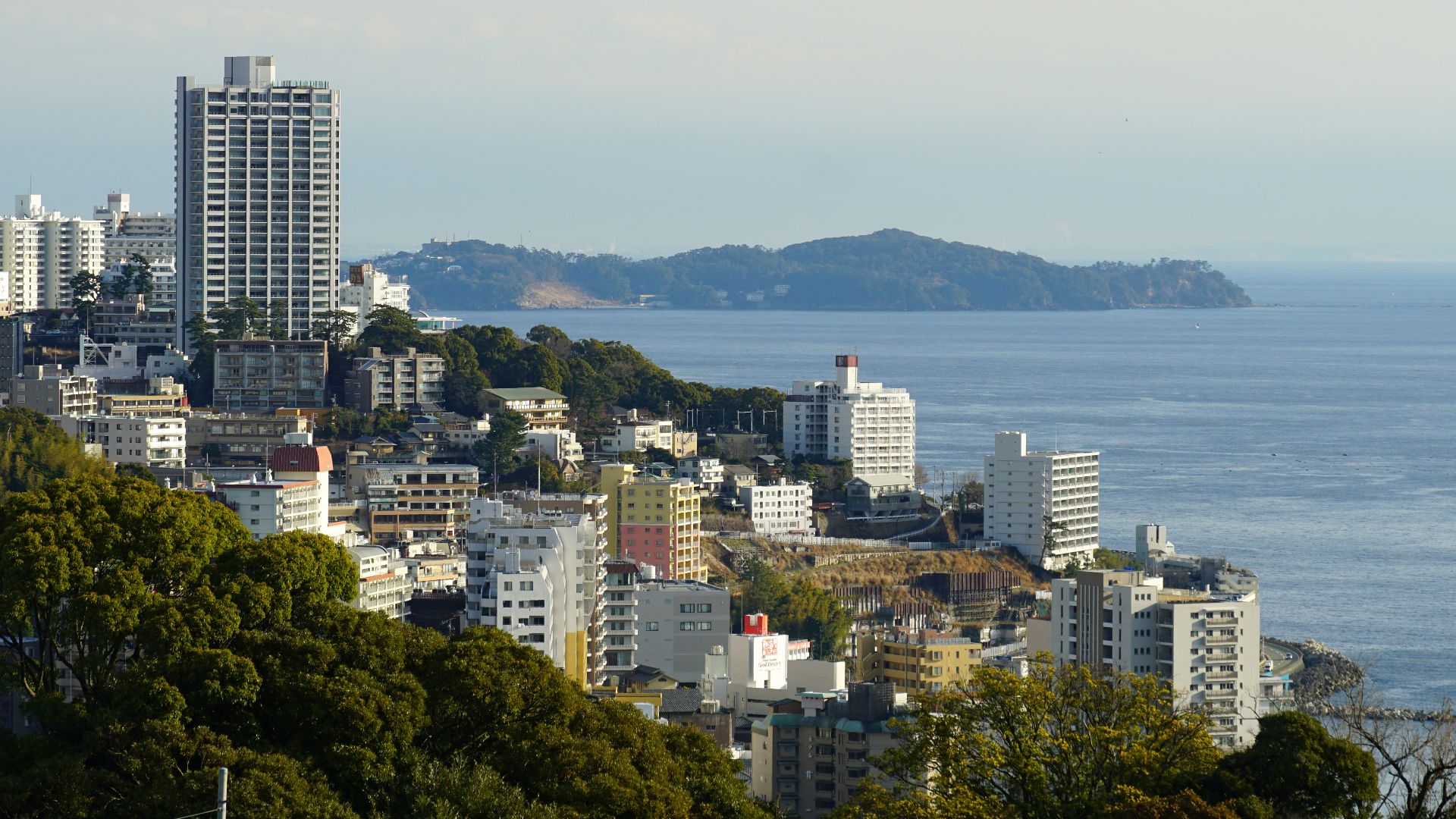 663highland, Wikimedia Commons
663highland, Wikimedia Commons
Ikaho
Few onsen towns can claim a more distinctive visual identity than Ikaho, where 365 stone steps, one for each day of the year, ascend dramatically through the heart of the village. Traditional shops and the famous brown-golden waters beneath them surround this area.
Ikaho (Cont.)
Originally developed by warlord Takeda Shingen during Japan's Warring States period as a place to heal his wounded soldiers, Ikaho built its terraced town along Mount Haruna's foothills. The steps were first constructed several years ago and were most recently renovated in 2010.
Ikaho (Cont.)
Ikaho's distinction lies in its two contrasting spring types: the historic Kogane-no-Yu ("golden water") that turns rich brown when iron content oxidizes upon exposure to air, and the newer Shirogane-no-Yu ("silver water") that remains crystal clear. The town holds the honor of being the birthplace of onsen manju.
Ureshino
In the mountains of Saga Prefecture, we get to see one of the three most famous "beautiful skin" hot springs. Ureshino Onsen has earned its reputation alongside only two other hot springs for producing waters that leave bathers with noticeably smoother, more moisturized skin.
Ureshino (Cont.)
The innovation of tea bathing reaches its pinnacle at establishments like Warakuen. You can soak in outdoor baths filled with Ureshino tea leaves, combining the mineral benefits of the alkaline springs with the antioxidant properties of high-quality green tea.
 20230509 182353 Utopia Warakuen rotenburo by Joanna Kostrzewa
20230509 182353 Utopia Warakuen rotenburo by Joanna Kostrzewa

